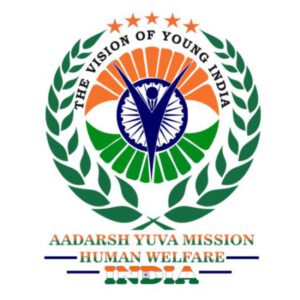DONATE FOR LIFE
“The Power To Save Lives Is In Your Hand”
An Initiative By Aadarsh Yuva Mission Human Welfare, India
![]()
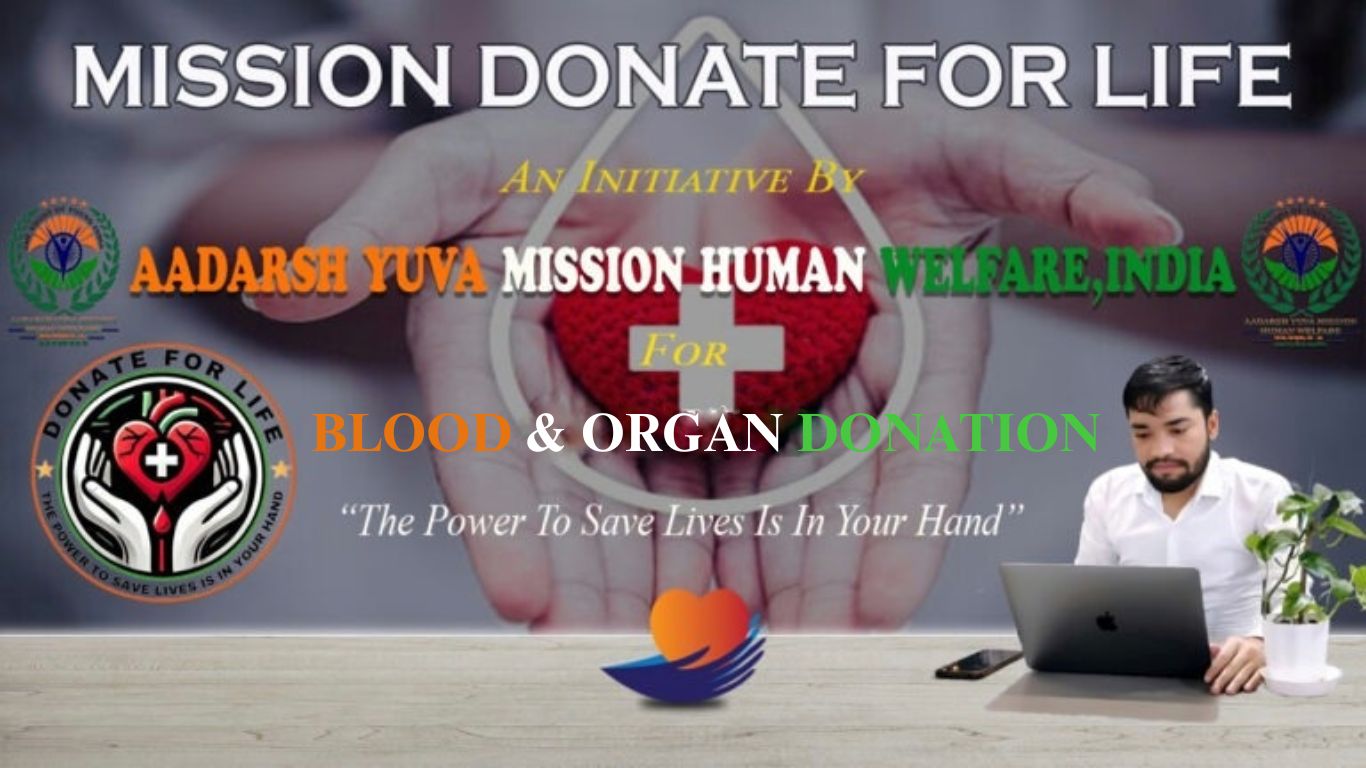 "Donate For Life" Is A Transformative Initiative By Aadarsh Yuva Mission Human Welfare India, Dedicated To Fostering A Culture Of Compassion And Selflessness Through Blood And Organ Donation. Rooted In The Belief That Every Individual Holds The Extraordinary Power To Save Lives, This Initiative Aims To Bridge The Critical Gap Between The Demand And Supply Of Blood And Organs In India, Ensuring That No Life Is Lost Due To A Lack Of Resources.India Faces A Significant Challenge In Meeting Its Annual Blood Demand Of Over 15 Million Units, With A Consistent Shortfall Impacting Patients Requiring Surgeries, Trauma Care, Or Treatment For Chronic Illnesses. Similarly, The Country Grapples With An Acute Scarcity Of Organs For Transplantation, With Thousands Of Patients Succumbing To Treatable Conditions Due To Insufficient Donations. "Donate For Life" Seeks To Address These Urgent Needs By Creating Robust Systems For Blood And Organ Donation, Fostering Awareness, And Empowering Communities To Contribute To Saving Lives.The Initiative Underscores The Life-Saving Impact Of Voluntary Blood And Organ Donation, Focusing On Breaking Social Taboos, Dispelling Myths, And Advocating For A United Effort Toward A Healthier, More Compassionate Society. Through Strategic Partnerships With Hospitals, Blood Banks, And Organ Donation Organizations, And By Leveraging Modern Technology And Widespread Awareness Campaigns, "Donate For Life" Aspires To Build A Sustainable Ecosystem Where Lifesaving Donations Become A Societal Norm.Every Drop Of Blood And Every Organ Donated Is A Gift Of Hope, A Second Chance, And A Testament To Humanity's Inherent Kindness. With "Donate For Life," Aadarsh Yuva Mission Human Welfare India Invites Every Individual To Become A Hero, Demonstrating That The Power To Save Lives Truly Lies In Their Hands.
"Donate For Life" Is A Transformative Initiative By Aadarsh Yuva Mission Human Welfare India, Dedicated To Fostering A Culture Of Compassion And Selflessness Through Blood And Organ Donation. Rooted In The Belief That Every Individual Holds The Extraordinary Power To Save Lives, This Initiative Aims To Bridge The Critical Gap Between The Demand And Supply Of Blood And Organs In India, Ensuring That No Life Is Lost Due To A Lack Of Resources.India Faces A Significant Challenge In Meeting Its Annual Blood Demand Of Over 15 Million Units, With A Consistent Shortfall Impacting Patients Requiring Surgeries, Trauma Care, Or Treatment For Chronic Illnesses. Similarly, The Country Grapples With An Acute Scarcity Of Organs For Transplantation, With Thousands Of Patients Succumbing To Treatable Conditions Due To Insufficient Donations. "Donate For Life" Seeks To Address These Urgent Needs By Creating Robust Systems For Blood And Organ Donation, Fostering Awareness, And Empowering Communities To Contribute To Saving Lives.The Initiative Underscores The Life-Saving Impact Of Voluntary Blood And Organ Donation, Focusing On Breaking Social Taboos, Dispelling Myths, And Advocating For A United Effort Toward A Healthier, More Compassionate Society. Through Strategic Partnerships With Hospitals, Blood Banks, And Organ Donation Organizations, And By Leveraging Modern Technology And Widespread Awareness Campaigns, "Donate For Life" Aspires To Build A Sustainable Ecosystem Where Lifesaving Donations Become A Societal Norm.Every Drop Of Blood And Every Organ Donated Is A Gift Of Hope, A Second Chance, And A Testament To Humanity's Inherent Kindness. With "Donate For Life," Aadarsh Yuva Mission Human Welfare India Invites Every Individual To Become A Hero, Demonstrating That The Power To Save Lives Truly Lies In Their Hands.
The "Donate For Life" Initiative By Aadarsh Yuva Mission Human Welfare India Aligns Closely With Several United Nations Sustainable Development Goals (Sdgs), Demonstrating Its Commitment To Creating A Healthier, Equitable, And Sustainable Future. Guided By The Tagline "The Power To Save Lives Is In Your Hand," The Initiative Supports Global Efforts To Ensure Health, Well-Being, And Sustainable Development For All.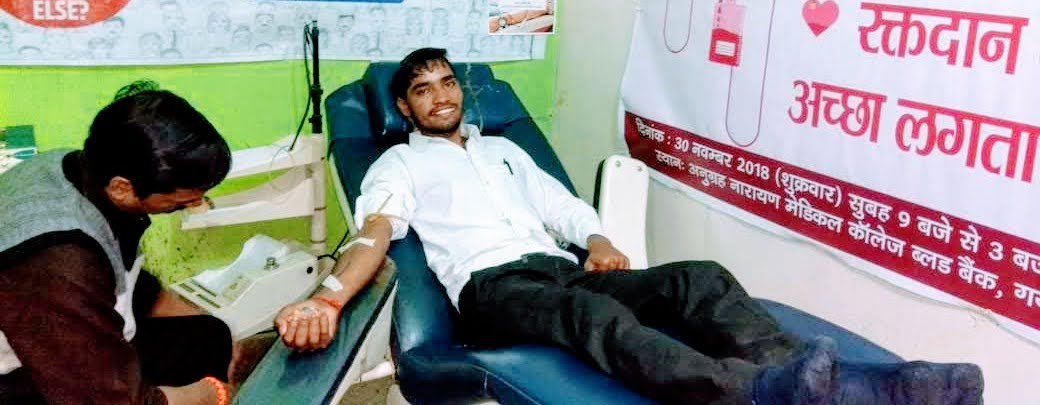
- Sdg 3: Good Health And Well-Being:By Promoting Blood And Organ Donation, The Initiative Directly Contributes To Reducing Mortality Rates And Improving Medical Outcomes For Individuals Suffering From Life-Threatening Conditions. It Supports Equitable Access To Essential Health Services And Reduces The Gap In Healthcare Availability, Especially In Underserved Areas.
- Sdg 4: Quality Education:The Initiative Incorporates Educational Campaigns And Awareness Programs To Inform Communities About The Importance Of Blood And Organ Donation. These Efforts Foster A Culture Of Giving And Empower Individuals With Knowledge To Make Informed Decisions About Their Health And Societal Contributions.
- Sdg 10: Reduced Inequalities:"Donate For Life" Ensures That Lifesaving Resources Like Blood And Organs Are Made Available To Individuals Irrespective Of Their Socioeconomic Status, Bridging Healthcare Disparities And Providing Equal Opportunities For Survival And Recovery.
- Sdg 11: Sustainable Cities And Communities:By Integrating Blood And Organ Donation Drives Into Urban And Rural Community Health Programs, The Initiative Contributes To Building Resilient Healthcare Systems And Fostering Solidarity Among Community Members.
- Sdg 16: Peace, Justice, And Strong Institutions:The Initiative Advocates For Transparent And Ethical Donation Systems, Ensuring That All Processes Are Conducted With Integrity And In Compliance With Established Guidelines, Thereby Building Trust And Encouraging Participation.
- Sdg 17: Partnerships For The Goals:The Initiative Emphasizes Collaboration With Hospitals, Ngos, Government Bodies, And Private Organizations To Create A Robust And Accessible Donation Ecosystem. These Partnerships Amplify The Reach And Impact Of The Initiative While Fostering Collective Action For A Shared Cause.
Examples Of Alignment With Sdgs:
- Promoting Universal Healthcare: Organizing Blood Donation Camps In Remote Areas Where Access To Healthcare Is Limited Directly Supports Sdg 3.
- Educational Partnerships: Collaborating With Schools And Colleges To Conduct Seminars Aligns With Sdg 4, Promoting Awareness And Youth Involvement.
- Equitable Access Initiatives: Ensuring Blood And Organ Donations Reach Marginalized Communities Reflects The Commitment To Sdg 10.
Through These Aligned Efforts, "Donate For Life" Is Not Only Saving Lives But Also Contributing To The Broader Global Agenda For Sustainable Development, Making It A Model Initiative For Impactful Change.
Tagline
"The Power To Save Lives Is In Your Hand"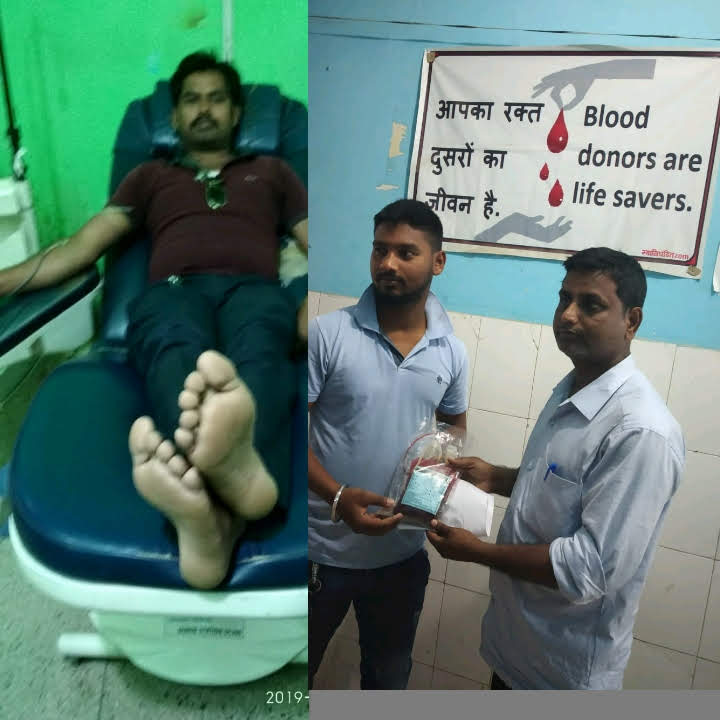
- Empowering Individuals: The Tagline Emphasizes That Each Person Has The Ability To Make A Significant Impact On Others' Lives Through Simple Yet Profound Actions Like Blood And Organ Donation.
- Literal Interpretation: The Phrase "In Your Hand" Signifies The Act Of Physically Donating Blood Or Signing Up For Organ Donation, Making Life-Saving Contributions Tangible And Actionable.
- Call To Responsibility: It Urges Individuals To Recognize Their Moral Responsibility To Contribute To Humanity By Helping Save Lives.
- Potential To Transform Lives: The Tagline Highlights The Transformative Power Individuals Hold, Capable Of Turning Despair Into Hope For Recipients.
- Fostering Compassion: It Encourages Compassion And Empathy By Reminding Us That Saving Lives Is A Privilege We All Can Exercise.
- Promoting Awareness: The Tagline Serves As A Reminder Of The Need For Greater Awareness About The Importance Of Blood And Organ Donation In Saving Lives.
- Universal Appeal: By Focusing On Personal Empowerment, It Creates A Universal Message That Resonates With Everyone, Regardless Of Their Background Or Circumstances.
- Inspiring Action: It Motivates People To Take Proactive Steps, Like Registering As Organ Donors Or Participating In Blood Donation Drives, To Be A Beacon Of Hope.
- Urgency Of Need: It Subtly Underscores The Immediacy Of The Need For Blood And Organ Donors, Showing That Life-Saving Actions Can’t Wait.
- Celebrating Humanity: The Tagline Honors The Human Capacity For Generosity And Altruism, Celebrating Those Who Choose To Give The Gift Of Life.
- Building Community Spirit: It Implies That Collective Participation In Donation Initiatives Strengthens Communities And Creates A Culture Of Care.
- Eliminating Hesitation: The Tagline Encourages Individuals To Overcome Fears Or Misconceptions About Donation, Showing The Simplicity And Impact Of Their Contributions.
- Saving Lives Is Accessible: It Communicates That One Doesn’t Need To Be Wealthy Or Highly Skilled To Save Lives—Every Individual Has This Innate Ability.
- Legacy Of Life: For Organ Donation, It Reflects The Idea That Even After Death, One Can Leave A Legacy Of Saving And Improving Lives.
- Hope For The Future: The Tagline Portrays A Hopeful Vision Where Everyone Recognizes And Exercises Their Power To Help Others, Creating A Healthier, More Compassionate Society.
Background And Justification
In A World Where Life-Saving Medical Treatments Often Depend On The Availability Of Blood And Organs, The Need For Donation Has Never Been More Critical. The “Donate For Life” Initiative By Aadarsh Yuva Mission Human Welfare India Addresses This Growing Concern By Promoting Both Blood And Organ Donation To Save Lives. The Tagline, “The Power To Save Lives Is In Your Hand,” Encapsulates The Essence Of This Initiative, Urging Individuals To Step Forward And Make A Significant Impact On Someone’s Life.
Blood And Organ Donation Are Crucial For The Treatment Of Various Medical Conditions, From Trauma And Surgeries To Chronic Diseases And Organ Failure. According To The World Health Organization, Millions Of People Across The Globe Require Blood And Organ Transplants Each Year, But The Availability Of Both Remains Insufficient. This Gap In Supply And Demand Highlights The Urgent Need For Community Participation In Donation Programs.
By Raising Awareness And Encouraging Voluntary Donations, The “Donate For Life” Initiative Aims To Fill This Gap And Provide Hope To Those In Need. It Underscores The Power That Each Individual Holds In Transforming A Life Through A Simple Yet Profound Act Of Giving.
Blood Donation:
Blood Donation Is Vital For A Variety Of Medical Emergencies, Including Accidents, Surgeries, Cancer Treatments, And Childbirth Complications. However, Despite Its Importance, Many Countries Face A Severe Shortage Of Blood Supplies. In India, For Example, A Large Number Of Hospitals Experience A Constant Shortage Of Blood. The “Donate For Life” Initiative Seeks To Bridge This Gap By Organizing Regular Blood Donation Camps, Collaborating With Blood Banks, And Creating An Awareness Campaign About The Importance Of Regular Blood Donations.
- Awareness Campaigns: Through Social Media, Workshops, And Community Outreach Programs, The Initiative Educates People About The Life-Saving Potential Of Blood Donation.
- Blood Donation Drives: Local Events, In Collaboration With Health Institutions, Encourage People To Donate Blood Regularly, With An Emphasis On Its Safety And Minimal Side Effects.
- Youth Engagement: Since Young People Form A Significant Demographic, The Initiative Focuses On Them By Organizing Youth-Driven Blood Donation Drives And Incorporating Donation Drives Into School And College Programs.
Organ Donation: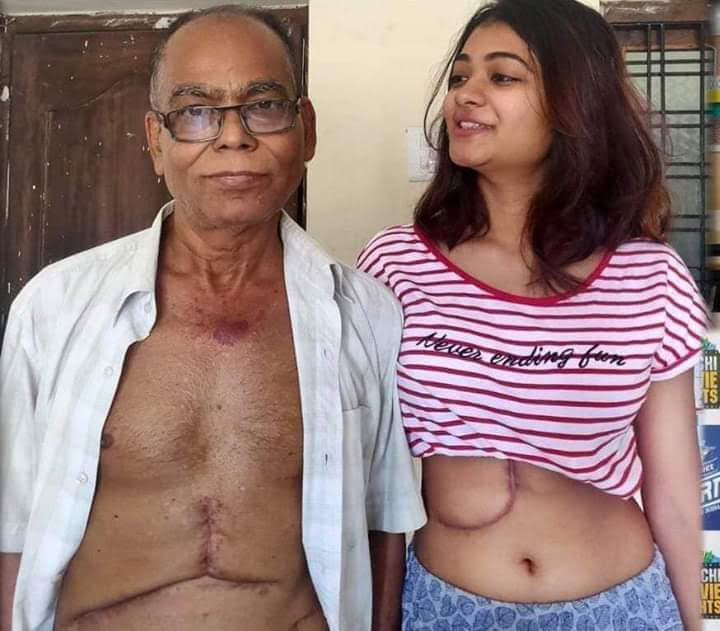
The Need For Organ Donation Is Equally Pressing. Every Year, Thousands Of People Die Waiting For Organs, And Many Others Suffer From Severe Medical Conditions That Can Be Treated Only With Organ Transplants. However, The Shortage Of Organ Donors Remains A Significant Challenge. The “Donate For Life” Initiative Educates People On The Importance Of Organ Donation, Especially In Cases Where Brain Death Is Determined.
- Organ Donation Awareness: The Initiative Provides Informational Materials And Hosts Webinars And Seminars To Inform The Public About How Organ Donation Works, Who Can Donate, And How It Helps Save Lives.
- Transplant Success Stories: Sharing Success Stories Of Organ Recipients Not Only Spreads Awareness But Also Fosters A Culture Of Hope, Showing Potential Donors The Life-Changing Impact Of Their Decisions.
- Encouraging Family Discussions: Organ Donation Often Involves Family Consent. The Initiative Encourages Families To Have Open Discussions About Organ Donation To Ensure A Decision Is Made In Advance.
Community-Based Initiatives: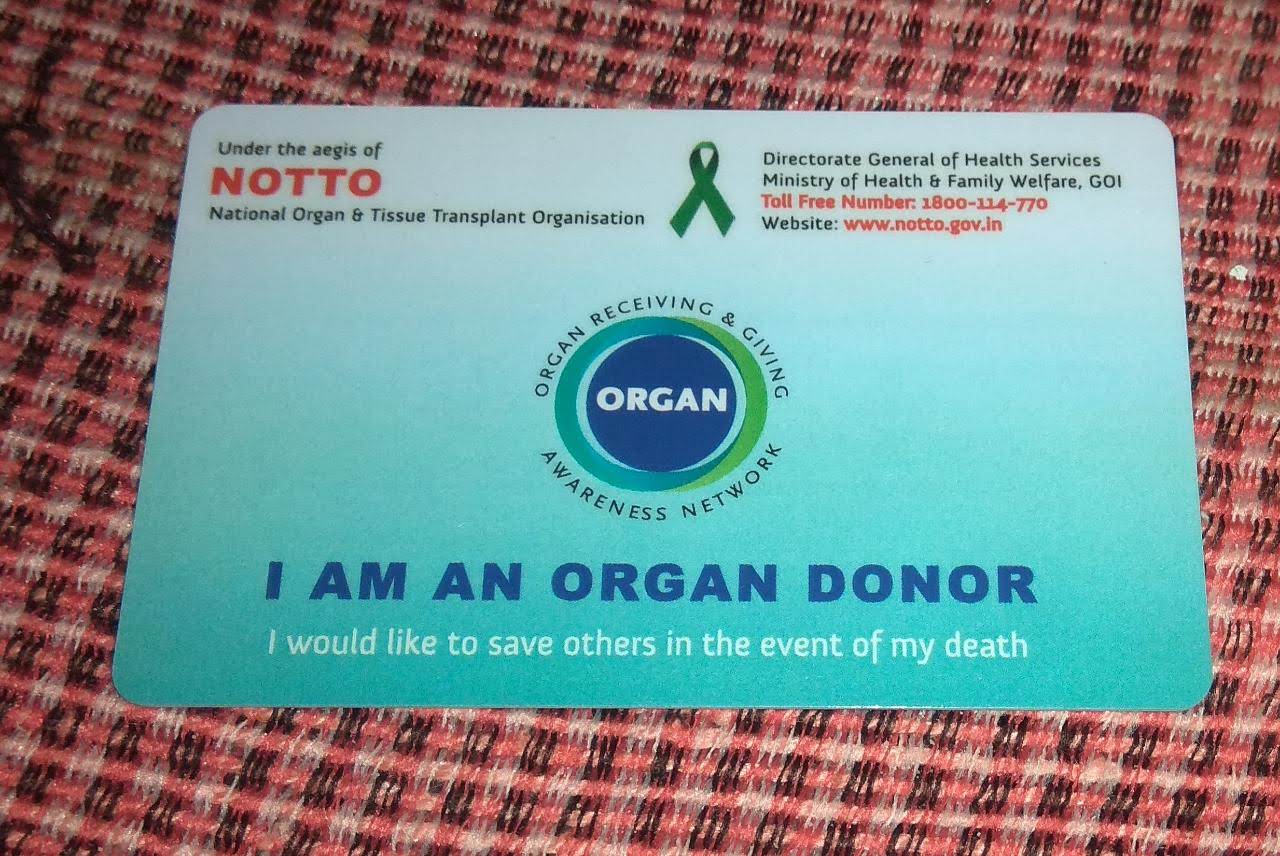
- Community Health Camps: Health Camps Can Offer Free Health Check-Ups And At The Same Time, Educate The Community About The Need For Blood And Organ Donation.
- Corporate Partnerships: Partnering With Businesses And Companies To Organize Donation Drives, Providing Employees With The Opportunity To Donate Blood Or Register As Organ Donors.
Collaboration With Hospitals And Ngos: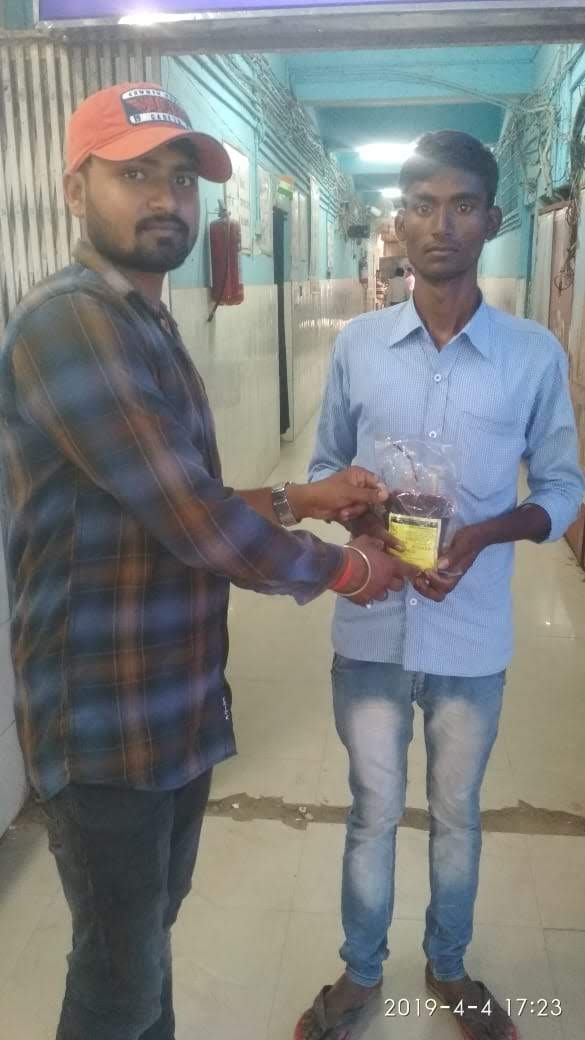
- Hospital Tie-Ups: Collaborating With Hospitals And Clinics To Ensure That Blood And Organ Donors Are Given The Proper Medical Attention And Support, Making The Donation Process Smooth And Safe.
- Networking With Other Ngos: By Partnering With Other Organizations That Work In The Health Sector, The Initiative Can Strengthen Its Reach, Sharing Resources, Knowledge, And Advocacy To Increase Donations.
The “Donate For Life” Initiative Is A Step Toward Addressing The Growing Gap In The Supply Of Blood And Organs. It Is A Call For Individuals, Communities, And Organizations To Unite For A Cause That Saves Lives. By Educating The Public, Offering Platforms For Donation, And Advocating For Policies That Support Donation Systems, This Initiative Aims To Create A Culture Of Life-Saving Giving. Through Collective Action, We Can Ensure That More People Survive Life-Threatening Conditions, Creating A Healthier And More Compassionate Society.
Why Donate For Life Initiative?
The “Donate For Life” Initiative By Aadarsh Yuva Mission Human Welfare India Is Designed To Address The Critical Shortage Of Blood And Organs Needed For Life-Saving Medical Treatments. The Tagline, "The Power To Save Lives Is In Your Hand," Emphasizes The Profound Impact That Every Individual Can Have On Someone Else's Life By Simply Donating Blood Or Organs.
In A World Where Millions Of People Are Waiting For Life-Saving Transplants Or Need Blood For Surgeries And Emergencies, This Initiative Calls On Individuals To Act. Despite The Growing Need, The Supply Of Both Blood And Organs Remains Insufficient, And This Gap Can Only Be Filled Through Collective Action. By Promoting Voluntary Blood And Organ Donation, The Initiative Empowers People To Be A Part Of The Solution, Offering Them The Opportunity To Make A Real Difference.The "Donate For Life" Initiative Focuses On:
- Raising Awareness About The Urgent Need For Blood And Organ Donations.
- Educating The Public About The Life-Saving Potential Of These Donations.
- Encouraging People To Take Action, With The Understanding That Their Involvement Could Save Lives.
Through This Initiative, Aadarsh Yuva Mission Human Welfare India Aims To Foster A Culture Of Giving, Where Every Individual Recognizes The Power They Hold In Saving Lives And Contributing To A Compassionate Society.
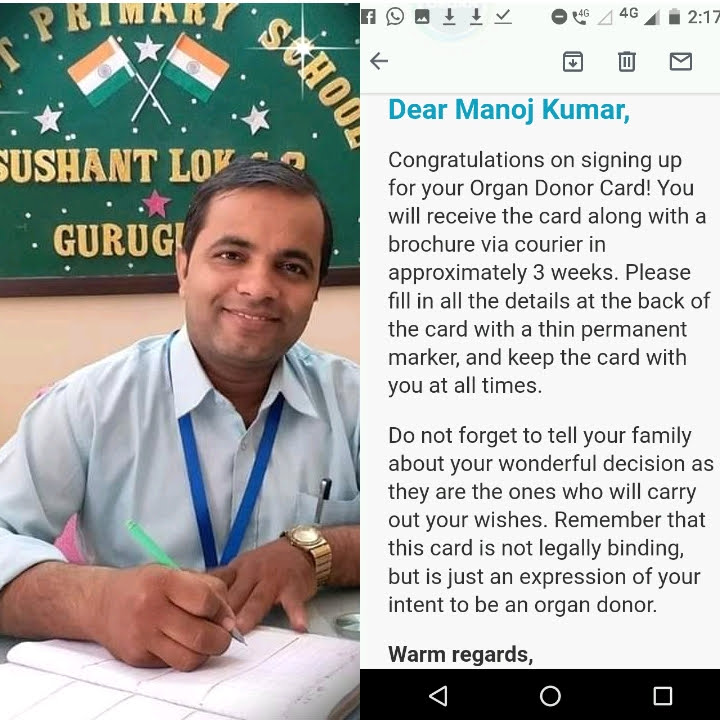 The Need For Donate For Life Initiative
The Need For Donate For Life Initiative
The “Donate For Life” Initiative By Aadarsh Yuva Mission Human Welfare India Addresses An Urgent And Growing Public Health Challenge— The Shortage Of Blood And Organs Required To Save Lives. The Tagline, “The Power To Save Lives Is In Your Hand,” Reflects The Pivotal Role Each Individual Can Play In Providing Life-Saving Resources Through Blood And Organ Donations.
Reasons For The Need:
- Critical Shortage Of Blood:
- Every Year, Millions Of People Require Blood For Surgeries, Trauma Care, Cancer Treatments, Childbirth Complications, And More. However, Despite The Increasing Demand, Blood Donations Remain Insufficient To Meet The Needs. According To The World Health Organization (Who), Blood Shortages Are A Global Concern, And Many Hospitals Experience Constant Deficits, Leading To Preventable Deaths.
- Organ Donation Shortages:
- Thousands Of Individuals Die Each Year While Waiting For An Organ Transplant. The Demand For Organs Far Exceeds The Supply, Especially In Cases Of Kidney, Liver, Heart, And Lung Failure. Many Patients Suffer Due To The Absence Of Suitable Donors, Leading To Severe Medical Conditions Or Death. Increasing Awareness And Encouraging Organ Donation Can Bridge This Life-Threatening Gap.
- Lack Of Awareness And Myths:
- Many Individuals Are Unaware Of The Life-Saving Impact Of Blood And Organ Donation. Misconceptions And Lack Of Information Prevent People From Donating, As They May Fear The Process Or Not Fully Understand The Importance Of Their Contributions. The Initiative Seeks To Educate The Public, Debunk Myths, And Encourage People To Consider Donation As A Means To Save Lives.
- The Importance Of Voluntary Donations:
- Voluntary Blood And Organ Donations Are Vital To Maintaining An Adequate Supply For Hospitals And Medical Treatments. By Fostering A Culture Of Voluntary Giving, The “Donate For Life” Initiative Can Ensure That More People Are Willing To Donate And Contribute To The Well-Being Of Others.
- Impact Of Every Single Donation:
- The Initiative Underscores The Fact That Even One Individual Can Make A Significant Impact. The “Power To Save Lives Is In Your Hand” Is A Reminder That Through Small, Selfless Acts, We Can Collectively Save Lives And Help Those In Dire Need Of Medical Care. A Single Donation Of Blood Can Save Multiple Lives, And A Single Organ Donation Can Offer A Second Chance To Someone In Critical Condition.
Why This Initiative Matters: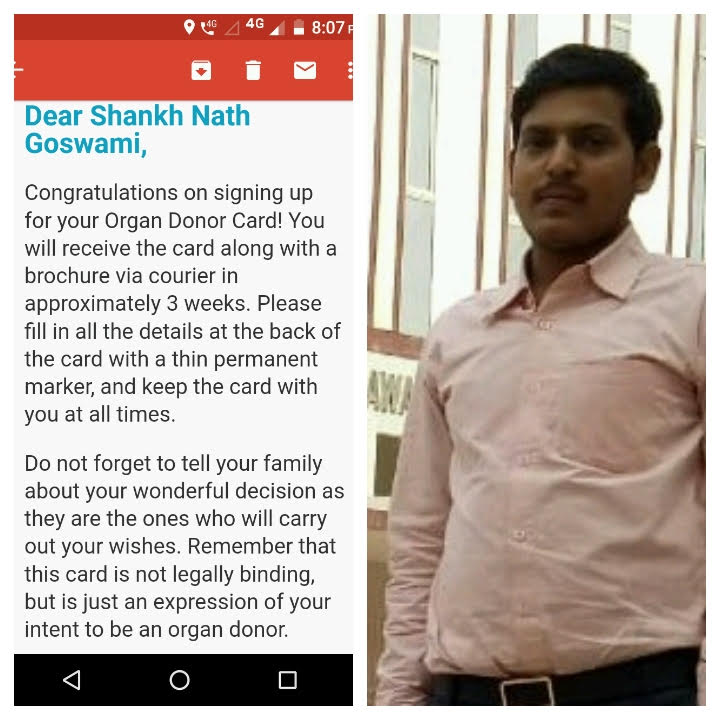
The “Donate For Life” Initiative Aims To Fill This Critical Gap By:
- Raising Awareness About The Life-Saving Power Of Blood And Organ Donations.
- Encouraging Individuals To Participate In Donation Drives, Making Regular Donations A Part Of Their Lifestyle.
- Promoting A Culture Of Giving, Where People Understand That Through Their Actions, They Can Bring Hope To Patients And Families In Need.
By Spreading Awareness And Encouraging People To Act, The “Donate For Life” Initiative Can Help Create A Life-Saving Impact That Extends Beyond The Individual And Builds A Compassionate, Health-Conscious Society.
What Makes The "Donate For Life" Initiative Different?
The “Donate For Life” Initiative By Aadarsh Yuva Mission Human Welfare India Stands Out Due To Its Holistic And Community-Driven Approach To Promoting Blood And Organ Donation. Several Unique Factors Make This Initiative More Impactful And Effective Compared To Other Donation Drives:
- Youth-Centric Approach:The Initiative Places A Strong Focus On Engaging Young People, Recognizing Their Potential To Drive Change In Society. By Organizing Youth-Led Campaigns, Blood Donation Drives, And Educational Programs In Schools, Colleges, And Universities, The Initiative Empowers The Next Generation To Take Action. Youth Engagement Ensures That Blood And Organ Donation Becomes A Regular Part Of Their Lives, Creating A Long-Term Impact On Donation Rates.
- Comprehensive Awareness And Education:Unlike Many Initiatives That Focus Solely On Organizing Donation Drives, “Donate For Life” Places A Heavy Emphasis On Educating The Public About The Significance Of Both Blood And Organ Donation. Through Workshops, Seminars, Informational Campaigns, And The Use Of Various Media Platforms, The Initiative Aims To Demystify The Process And Dispel Myths Surrounding Donation. This Education-Driven Approach Ensures That Potential Donors Fully Understand The Life-Saving Potential Of Their Actions, Which Encourages More People To Step Forward.
- Collaboration With Hospitals And Ngos:One Of The Key Features That Sets This Initiative Apart Is Its Collaborative Efforts With Hospitals, Blood Banks, And Other Ngos Working In The Healthcare Sector. This Partnership Ensures A Seamless And Safe Donation Process For Blood And Organ Donors, And It Strengthens The Reach And Effectiveness Of The Campaign. It Also Allows For Better Organization And Follow-Up Care For Donors And Recipients, Making The Entire Experience Smoother For Everyone Involved.
- Family Involvement In Organ Donation:The “Donate For Life” Initiative Goes Beyond Individual Education By Encouraging Families To Have Open Discussions About Organ Donation. It Recognizes That Family Consent Is Often A Crucial Factor In Organ Donation Decisions, Especially In Cases Of Brain Death. The Initiative Promotes The Importance Of Making Informed Decisions As A Family, Ensuring That Individuals Are Prepared And Willing To Donate When The Time Comes.
- Integration With Corporate Partnerships:By Partnering With Businesses And Corporations, The Initiative Taps Into A Large And Diverse Audience, Encouraging Employees To Donate Blood Or Register As Organ Donors. Corporate Partnerships Also Allow For The Organization Of Workplace Blood Donation Camps And Educational Sessions, Ensuring That Employees Are Actively Engaged In The Cause. This Collaboration Helps Reach A Wider Demographic, Including Those Who Might Not Typically Participate In Donation Drives.
- Holistic Community Engagement:The Initiative Isn’t Just About Organizing Donation Camps; It Involves Active Community Engagement Through Health Camps, Local Awareness Campaigns, And Grassroots Mobilization. By Providing Free Health Check-Ups And Engaging In Regular Dialogues With Local Communities, The Initiative Fosters A Deeper Connection Between The Public And The Cause Of Blood And Organ Donation. This Approach Helps Build A Stronger Culture Of Giving And Community Support.
- Highlighting Personal Stories And Successes:Sharing Real-Life Success Stories Of Blood And Organ Recipients Plays A Pivotal Role In Inspiring Others To Donate. The “Donate For Life” Initiative Emphasizes The Transformative Impact Of A Single Donation By Showcasing How It Changes Lives. Personal Stories Humanize The Cause And Motivate Others To Contribute, Making The Cause Relatable And Emotionally Compelling.
- Long-Term Sustainability:The “Donate For Life” Initiative Is Built To Create Lasting Change, Not Just Short-Term Gains. It Focuses On Building A Sustainable Culture Of Donation Through Regular Blood Drives, Education, And Consistent Community Outreach. By Focusing On Long-Term Engagement Rather Than One-Time Events, The Initiative Aims To Create A Society Where Blood And Organ Donation Is A Natural, Ongoing Practice.
What Makes The “Donate For Life” Initiative Different Is Its Comprehensive, Youth-Driven, And Community-Focused Approach To Raising Awareness And Encouraging Participation In Blood And Organ Donation. By Fostering Partnerships, Creating Awareness Through Education, Involving Families, And Using Personal Success Stories, The Initiative Strives To Build A Lasting Impact On Both The Individuals Who Donate And The Communities They Serve.
Mission Of Donate For Life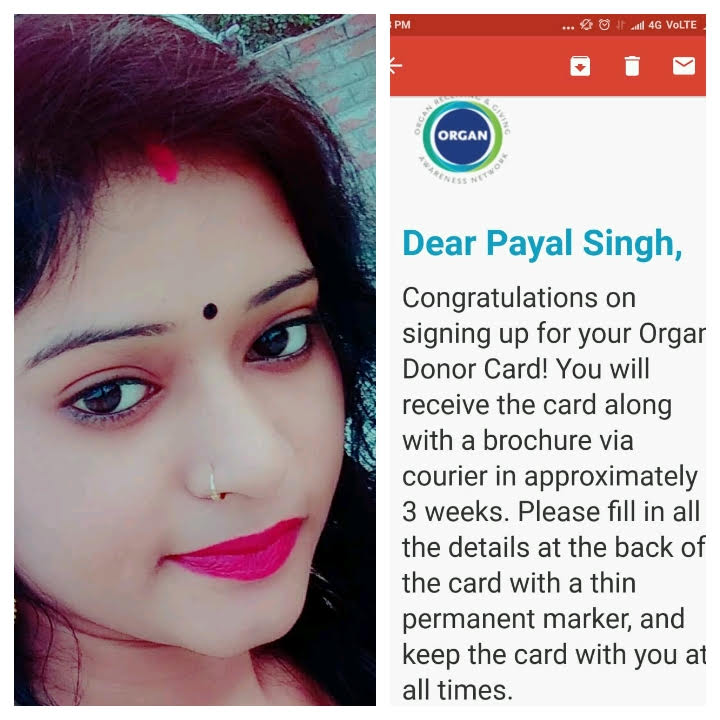
The Mission Of "Donate For Life" By Aadarsh Yuva Mission Human Welfare India Is To Inspire Individuals, Communities, And Organizations To Actively Participate In Blood And Organ Donation To Save Lives. Guided By The Powerful Tagline, "The Power To Save Lives Is In Your Hand," The Initiative Seeks To Raise Awareness About The Critical Need For Both Blood And Organ Donations. It Emphasizes The Life-Changing Impact A Single Donation Can Have, Urging People To Recognize Their Ability To Contribute To A Healthier, More Compassionate Society.
At The Heart Of This Mission Is A Commitment To Filling The Gap Between The Growing Demand And The Insufficient Supply Of Blood And Organs For Medical Treatments. Through Educational Campaigns, The Initiative Aims To Demystify The Donation Process, Eliminate Misconceptions, And Empower Individuals To Make Informed Decisions. By Organizing Blood Donation Drives, Community Health Camps, And Educational Workshops, "Donate For Life" Seeks To Ensure That Blood And Organ Donation Becomes A Regular And Voluntary Practice.
Additionally, The Initiative Focuses On Creating A Culture Of Giving, Especially Among The Youth, Who Are Encouraged To Take An Active Role In Spreading Awareness And Participating In Donation Events. Through Partnerships With Hospitals, Ngos, And Corporate Entities, The Mission Aims To Create A Widespread Network Of Donors, Making The Process More Accessible And Seamless.
Ultimately, The Mission Of "Donate For Life" Is To Save Lives, Build A Society Grounded In Compassion, And Ensure That No One Has To Wait For A Life-Saving Transplant Or Medical Treatment.
Vision Of "Donate For Life" Initiative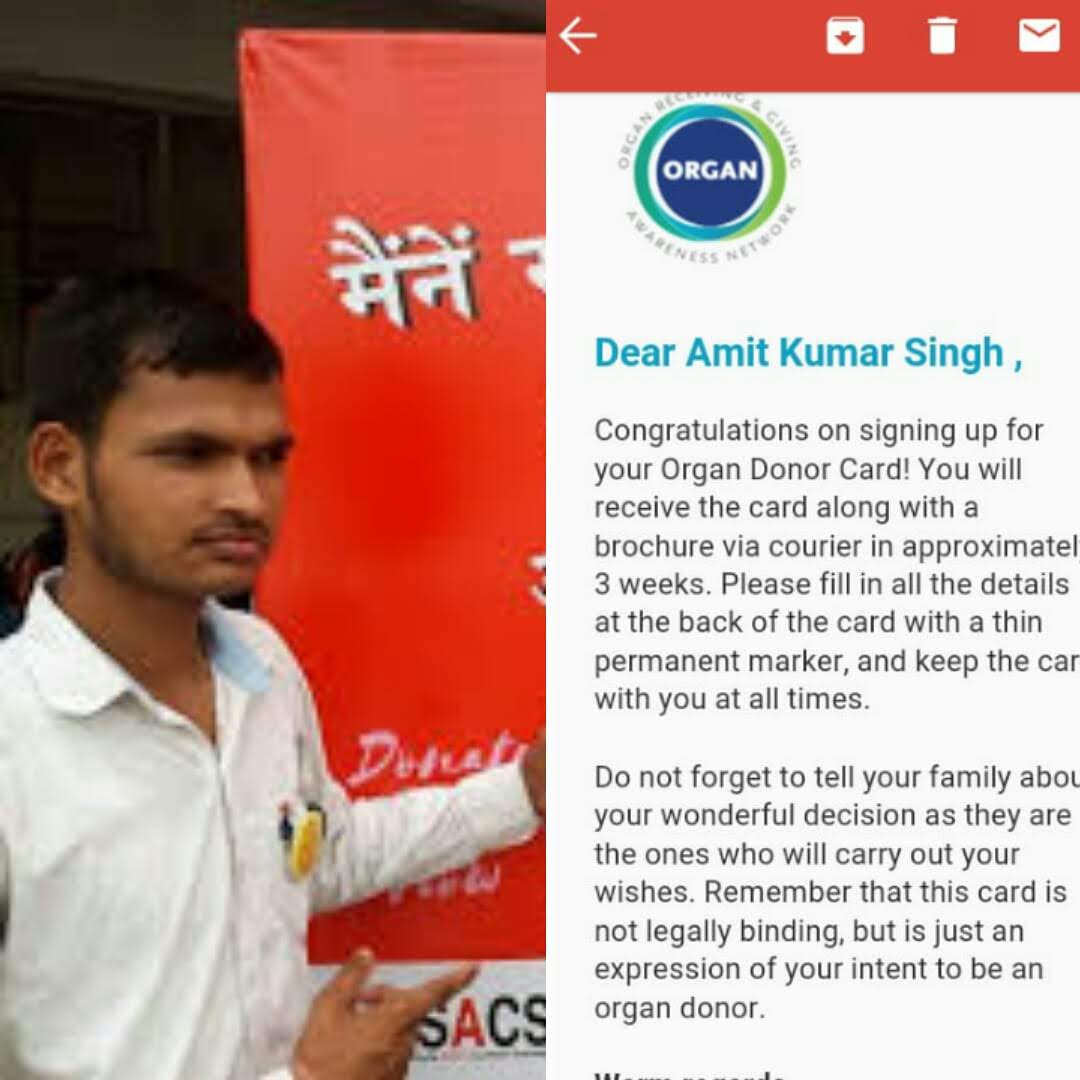
The Vision Of The "Donate For Life" Initiative By Aadarsh Yuva Mission Human Welfare India Is To Create A Compassionate, Health-Conscious Society Where Individuals Recognize The Profound Impact Their Actions Can Have On Saving Lives. The Tagline, “The Power To Save Lives Is In Your Hand,” Encapsulates The Core Message Of The Initiative: That Each Person Holds The Power To Make A Life-Saving Difference By Donating Blood Or Organs. This Vision Goes Beyond Just Meeting Immediate Medical Needs; It Aims To Foster A Culture Of Selfless Giving, Where The Act Of Donation Is Seen As A Natural And Essential Part Of Life.
At The Heart Of This Vision Is A Commitment To Addressing The Critical Shortage Of Blood And Organs, Which Remains A Major Health Challenge Globally. Through Widespread Awareness Campaigns, Educational Outreach, And Community-Based Initiatives, The “Donate For Life” Initiative Envisions A Society Where Every Individual Understands The Significance Of Blood And Organ Donation, And Feels Empowered To Take Action. By Engaging Youth, Families, Communities, And Corporations, The Initiative Strives To Create A Collective Movement That Leads To Consistent And Sustainable Donations.
The Ultimate Goal Is To Save Countless Lives, Reduce Waiting Times For Organ Transplants, And Provide Hope To Individuals Facing Life-Threatening Conditions. By Educating People And Encouraging Them To Donate Regularly, The “Donate For Life” Initiative Envisions A Future Where The Act Of Donation Is Not Only Commonplace But A Symbol Of Solidarity And Compassion, Contributing To A Healthier, More Caring Society For Generations To Come.
Objectives Of Donate For Life
- Promote Awareness About The Importance Of Blood Donation.
- Educate The Public About The Process And Safety Of Organ Donation.
- Increase The Number Of Regular Blood Donors.
- Bridge The Gap Between The Demand And Supply Of Blood And Organs.
- Eliminate Misconceptions About Blood And Organ Donation.
- Organize Regular Blood Donation Drives Across Cities And Villages.
- Collaborate With Hospitals For Smooth Organ Transplant Processes.
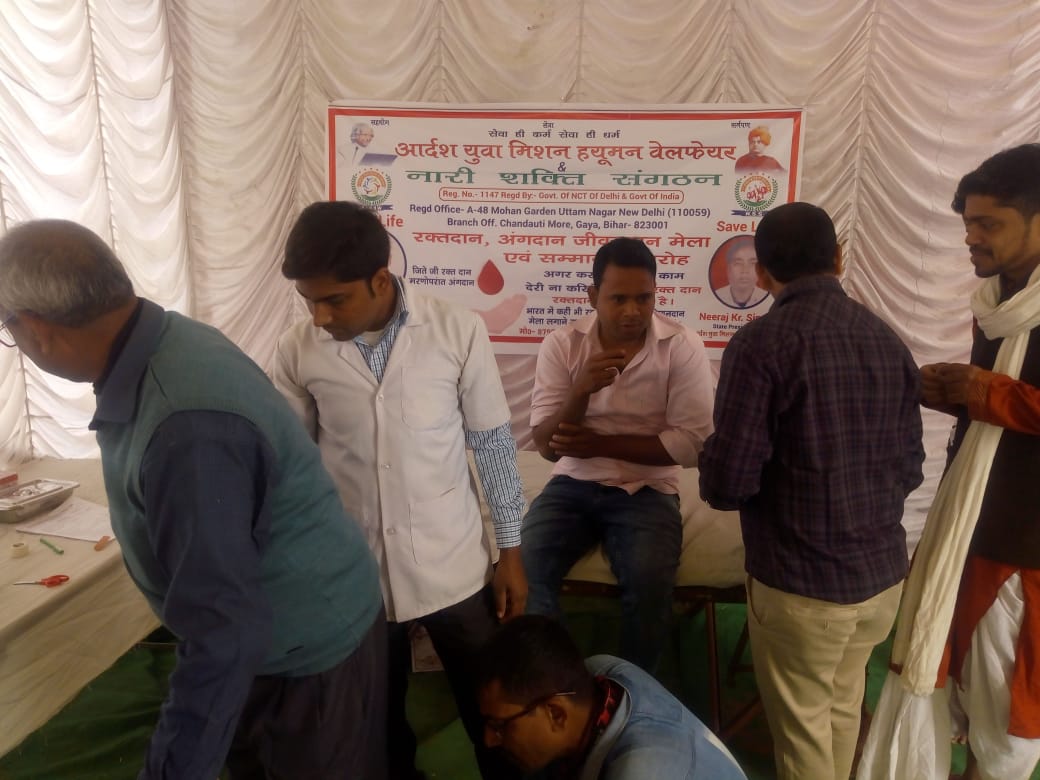
- Encourage Youth Participation In Donation Initiatives.
- Facilitate The Creation Of Organ Donor Registries.
- Partner With Schools And Colleges For Educational Campaigns.
- Foster A Culture Of Giving And Compassion In Society.
- Advocate For Policy Changes To Promote Organ Donation.
- Provide Resources And Support To Families Of Donors And Recipients.
- Host Seminars And Workshops On The Impact Of Organ Donation.
- Engage Corporate Entities To Host Donation Drives At Workplaces.
- Increase Voluntary Participation In Community Health Camps.
- Highlight Transplant Success Stories To Inspire Potential Donors.
- Encourage Families To Discuss And Consent To Organ Donation.
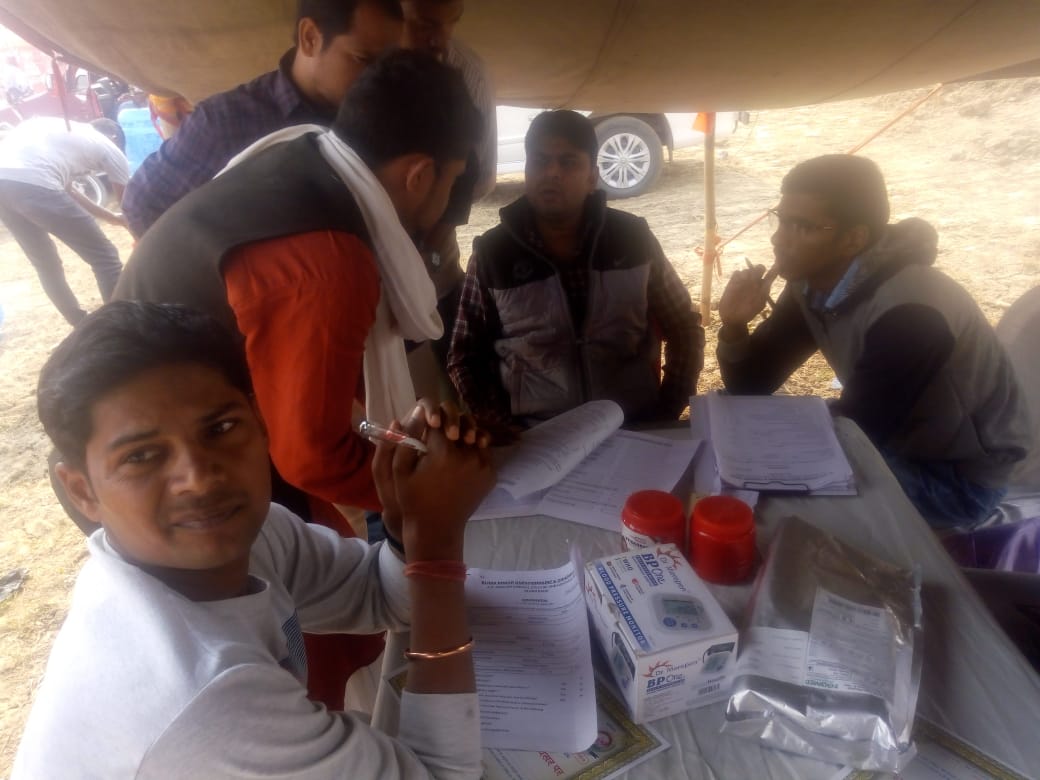
- Raise Awareness About Brain Death And Its Link To Organ Donation.
- Minimize Waiting Times For Life-Saving Transplants.
- Strengthen Partnerships With Ngos Working In Health And Wellness.
- Create Educational Materials On Blood And Organ Donation Benefits.
- Provide Recognition And Incentives For Regular Donors.
- Develop A Strong Network Of Blood Banks And Healthcare Providers.
- Utilize Social Media To Reach Larger Audiences With Impactful Campaigns.
- Educate Rural Populations About The Need For Donations.
- Empower Women To Participate In Blood And Organ Donation.
- Promote The Inclusion Of Donation Awareness In Healthcare Curriculums.
- Address Myths Surrounding Blood Donation During Menstruation And Pregnancy.
- Advocate For Financial And Logistical Support For Organ Transplant Recipients.
- Train Volunteers To Assist In Donation Drives And Awareness Programs.
- Partner With Religious Leaders To Address Cultural Barriers To Donation.
- Increase Donations During Natural Disasters And Emergencies.
- Focus On Rare Blood Group Donors For Specialized Needs.
- Promote Plasma Donation For Advanced Medical Treatments.
- Encourage Stem Cell Donation For Treating Life-Threatening Diseases.
- Improve Accessibility To Donation Facilities In Remote Areas.
- Provide Guidance On The Legal Aspects Of Organ Donation.
- Organize Donor Appreciation Events To Boost Morale.
- Develop Partnerships With Media Outlets For Broader Campaign Reach.
- Address Language Barriers By Creating Multilingual Resources.
- Educate The Elderly About Safe Donation Possibilities.
- Encourage Cross-Border Organ Donation Collaborations.
- Promote Ethical Practices In Blood And Organ Donation Processes.
- Support Research On Improving Donation Systems.
- Build A Platform For Real-Time Updates On Blood And Organ Availability.
- Strengthen Community Trust In Donation Systems.
- Celebrate Donor Contributions On National And International Health Days.
- Encourage Government Support For Donation Awareness Initiatives.
- Create A Sustainable Model For Long-Term Impact In Blood And Organ Donation.
Scope And Approach Of "Donate For Life"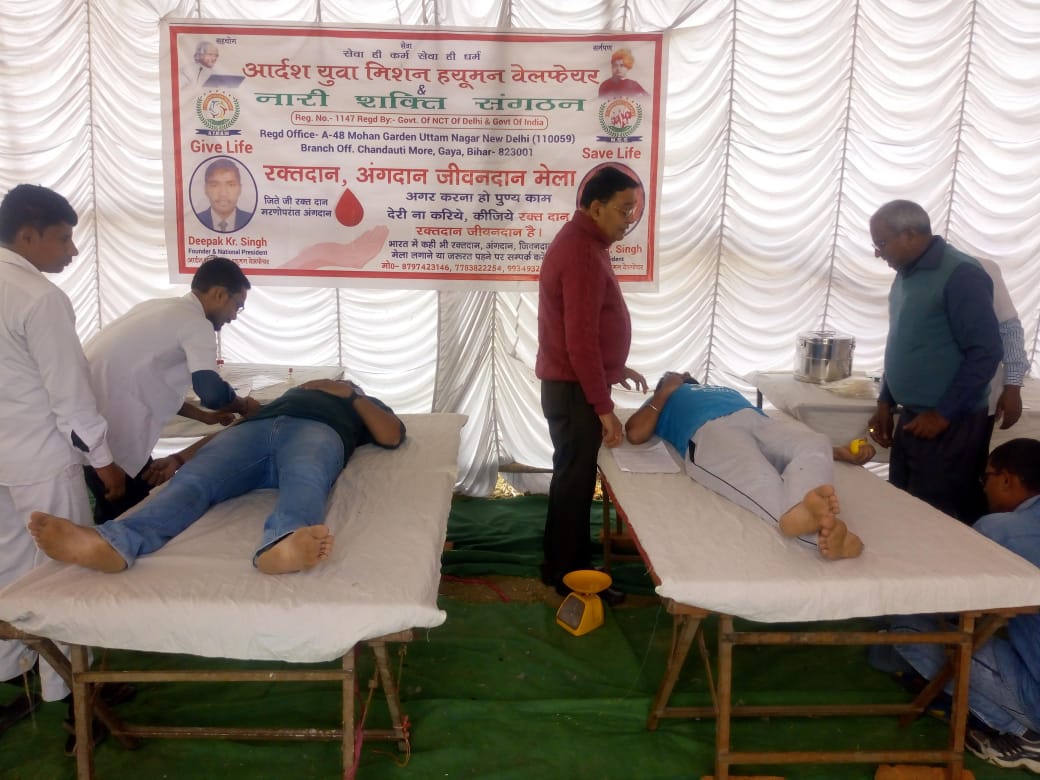
Scope:
The "Donate For Life" Initiative By Aadarsh Yuva Mission Human Welfare India Aims To Address The Critical Shortage Of Blood And Organs By Creating A Sustainable, Inclusive, And Impactful Donation Ecosystem. Its Scope Encompasses A Broad Range Of Activities That Include Raising Awareness, Facilitating Donations, Empowering Communities, And Collaborating With Stakeholders To Ensure Equitable Healthcare Access. The Initiative Targets Diverse Groups Such As Individuals, Families, Youth, Healthcare Providers, Corporate Entities, And Policymakers To Establish A Comprehensive Framework For Donation And Support.
Key Areas Of Scope: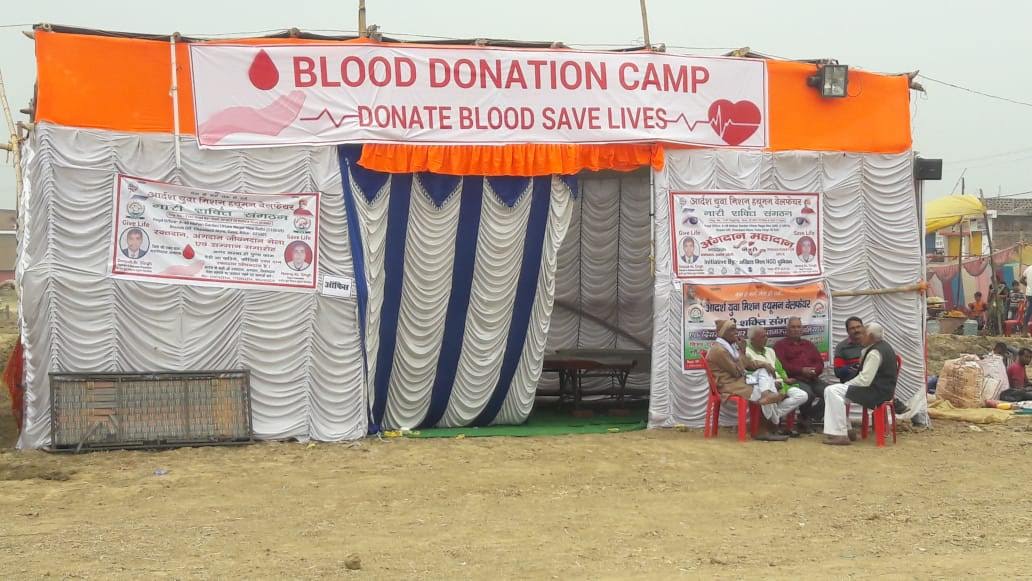
- Awareness And Education:
- Educate People About The Importance, Process, And Impact Of Blood And Organ Donation.
- Address Myths And Misconceptions About Donation Through Campaigns, Seminars, And Media Outreach.
- Donation Drives And Registries:
- Organize Blood Donation Camps And Drives In Collaboration With Schools, Colleges, And Offices.
- Develop Organ Donor Registries To Streamline The Donation Process And Ensure Timely Transplants.
- Collaborations And Partnerships:
- Partner With Hospitals, Ngos, And Blood Banks For Efficient Coordination.
- Engage Corporate Entities To Host Workplace Donation Drives.
- Advocacy And Policy Support:
- Advocate For Policies That Promote Organ And Blood Donation, Such As Faster Donor Registrations And Incentives For Donors.
- Work With The Government To Improve Donation Infrastructure And Accessibility.
- Community Engagement:
- Focus On Underserved And Rural Populations To Increase Participation In Donations.
- Use Local Leaders And Influencers To Promote Donation Culture.
Approach: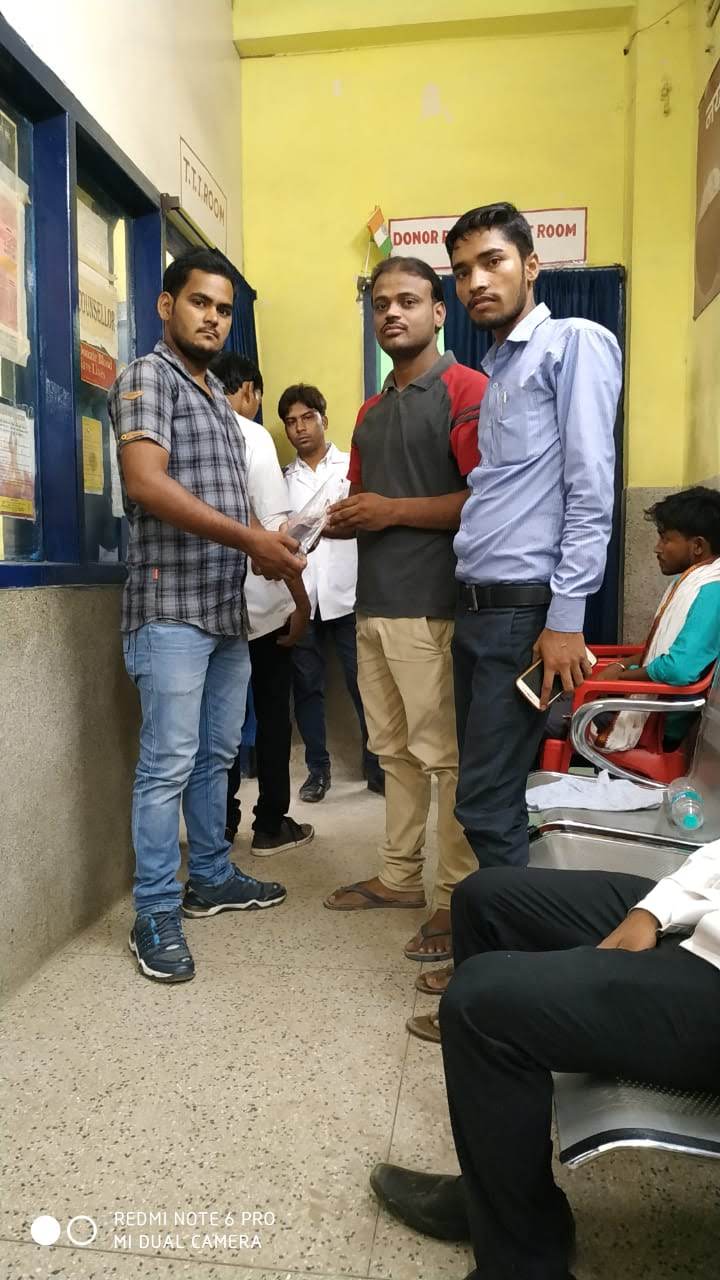
The Initiative Follows A Strategic And Multi-Faceted Approach To Achieve Its Goals, Focusing On Awareness, Facilitation, And Collaboration.
- Awareness Campaigns:
Example: Conducting A Nationwide “Donate Today, Save Tomorrow” Campaign Using Social Media, Print, And Television To Educate People About Blood And Organ Donation's Significance. - Regular Donation Drives:
Example: Partnering With Schools And Colleges To Organize Monthly Blood Donation Camps, Ensuring Youth Involvement And Consistent Blood Supply. - Celebrating Donors:
Example: Hosting Annual “Life Saver Awards” To Recognize Regular Blood And Organ Donors, Inspiring Others To Follow Suit. - Success Stories Sharing:
Example: Featuring Testimonials From Organ Transplant Recipients To Show How Donations Transform Lives, Fostering A Sense Of Impact Among Potential Donors. - Technology Integration:
Example: Developing A Mobile App To Connect Donors With Hospitals And Blood Banks In Real Time, Allowing For Quick Response During Emergencies. - Community-Specific Programs:
Example: Organizing Health Check-Up Camps In Rural Areas, Educating Attendees About Blood And Organ Donation, And Registering Willing Donors On The Spot. - Training Volunteers:
Example: Training College Students As “Donation Ambassadors” To Promote Blood And Organ Donation In Their Communities.
Illustration Of Scope And Approach In Action: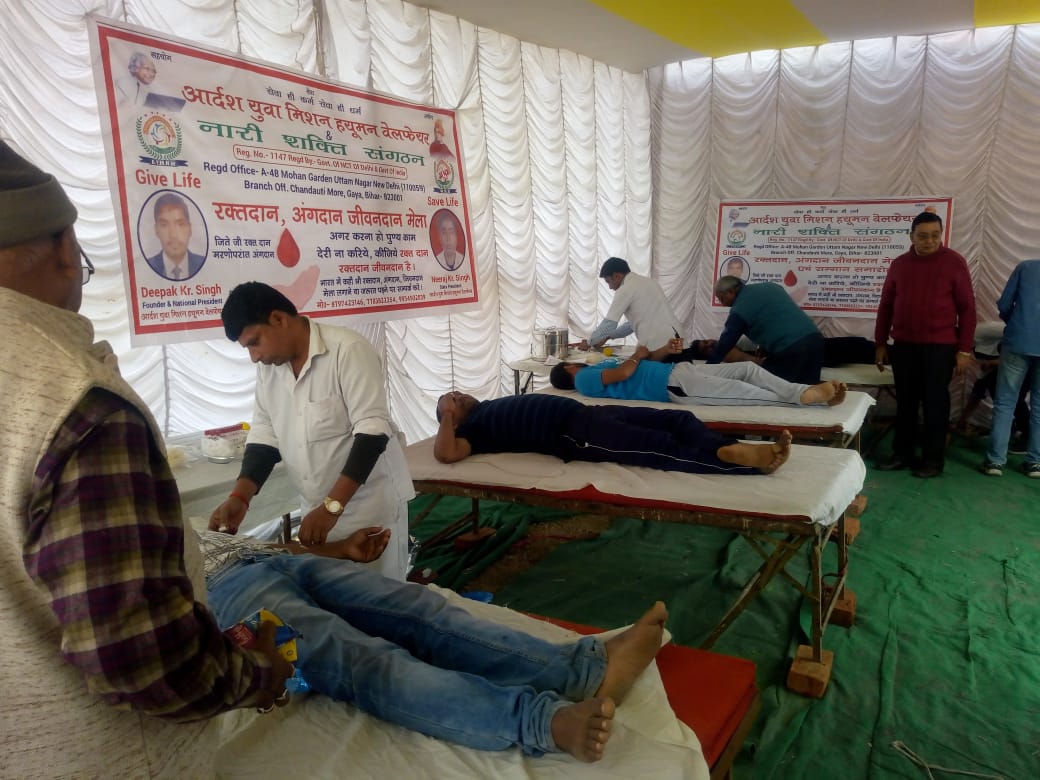
Imagine A Scenario Where A Car Accident Victim Urgently Needs Blood. Through The "Donate For Life" App, Nearby Registered Donors Are Notified In Real Time, And The Required Blood Type Is Delivered Within Hours. Simultaneously, A Donor’s Family Discusses Organ Donation After Brain Death Due To An Awareness Session They Attended Earlier, Enabling Life-Saving Transplants For Multiple Patients.
This Holistic Approach Ensures That "Donate For Life" Not Only Meets Immediate Medical Needs But Also Builds A Sustainable Culture Of Giving, Transforming Lives Across The Nation.
Services Provided By "Donate For Life"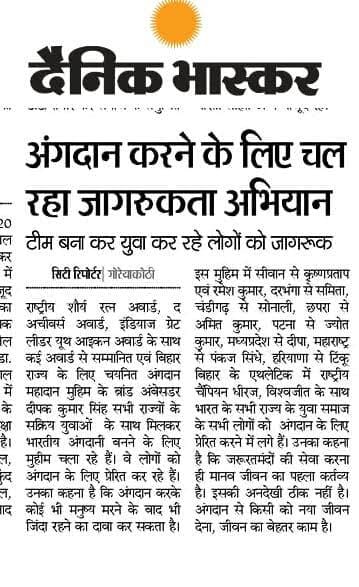
The "Donate For Life" Initiative By Aadarsh Yuva Mission Human Welfare India Provides A Wide Array Of Services To Promote Blood And Organ Donation, Ensuring A Seamless And Impactful Experience For Donors And Recipients Alike. These Services Are Designed To Address Every Aspect Of The Donation Process, From Awareness Creation To Post-Donation Support.
- Awareness And Education:
- Educational Campaigns: Conduct Workshops, Seminars, And Webinars To Educate The Public About The Importance Of Blood And Organ Donation.
- Myth-Busting Sessions: Address Common Misconceptions And Fears Regarding Donation Through Community Interactions And Expert Talks.
- Promotional Material: Distribute Leaflets, Brochures, And Digital Content To Spread Awareness About Donation Benefits.
- Donation Drives:
- Blood Donation Camps: Organize Regular Camps In Schools, Colleges, Offices, And Community Centers.
- Organ Pledge Drives: Facilitate Pledge Signing Events Where Individuals Commit To Donating Organs After Death.
- Mobile Donation Units: Deploy Mobile Vans For Blood Donation In Remote And Underserved Areas.
- Donor Registration And Support:
- Blood Donor Database: Maintain A Real-Time Database Of Voluntary Blood Donors For Emergencies.
- Organ Donor Registries: Help Individuals Register As Organ Donors With Relevant Authorities.
- Donor Helplines: Provide 24/7 Assistance For Donor Queries And Guidance On Donation Processes.
- Partnerships And Collaborations:
- Hospital Tie-Ups: Collaborate With Hospitals For Smooth Organ Transplant And Blood Transfusion Procedures.
- Ngo Partnerships: Work With Other Ngos To Extend Outreach And Share Resources.
- Corporate Engagement: Partner With Businesses To Organize Workplace Donation Drives And Awareness Sessions.
- Community Outreach Programs:
- Rural Health Camps: Offer Free Health Check-Ups While Educating Communities About Donation Needs.
- Youth Engagement: Engage Students Through Donation Events, Competitions, And Awareness Programs In Schools And Colleges.
- Local Influencer Involvement: Collaborate With Community Leaders To Advocate For Donation Culture.
- Technological Support:
- Donation App: Provide An App To Connect Donors, Recipients, And Hospitals For Real-Time Coordination.
- Online Pledge Portals: Allow Individuals To Pledge For Blood And Organ Donation Digitally.
- Database Management: Maintain A Centralized System To Track Blood And Organ Donation Needs And Availability.
- Recognition And Motivation:
- Donor Appreciation: Recognize Donors With Certificates, Badges, And Public Acknowledgment To Encourage Repeat Donations.
- Life Saver Awards: Celebrate Individuals And Organizations Contributing Significantly To The Cause.
- Advocacy And Policy Support:
- Policy Advocacy: Advocate For Supportive Government Policies And Legal Frameworks To Streamline The Donation Process.
- Ethical Oversight: Ensure Ethical Practices In Organ Donation And Transplantation.
- Emergency Response Services:
- Rapid Blood Supply: Provide Blood During Natural Disasters, Accidents, Or Critical Medical Emergencies.
- Organ Matching Assistance: Facilitate Organ Matching For Recipients Through Donor Networks.
- Post-Donation Support:
- Medical Follow-Up: Provide Health Monitoring For Blood Donors Post-Donation.
- Family Counseling: Offer Emotional And Legal Support To Families Of Organ Donors.
- Impact Reporting: Share Updates With Donors On How Their Contributions Have Helped Save Lives.
By Delivering These Services, "Donate For Life" Ensures A Comprehensive And Impactful Approach To Saving Lives Through Blood And Organ Donation.
Activities Of "Donate For Life"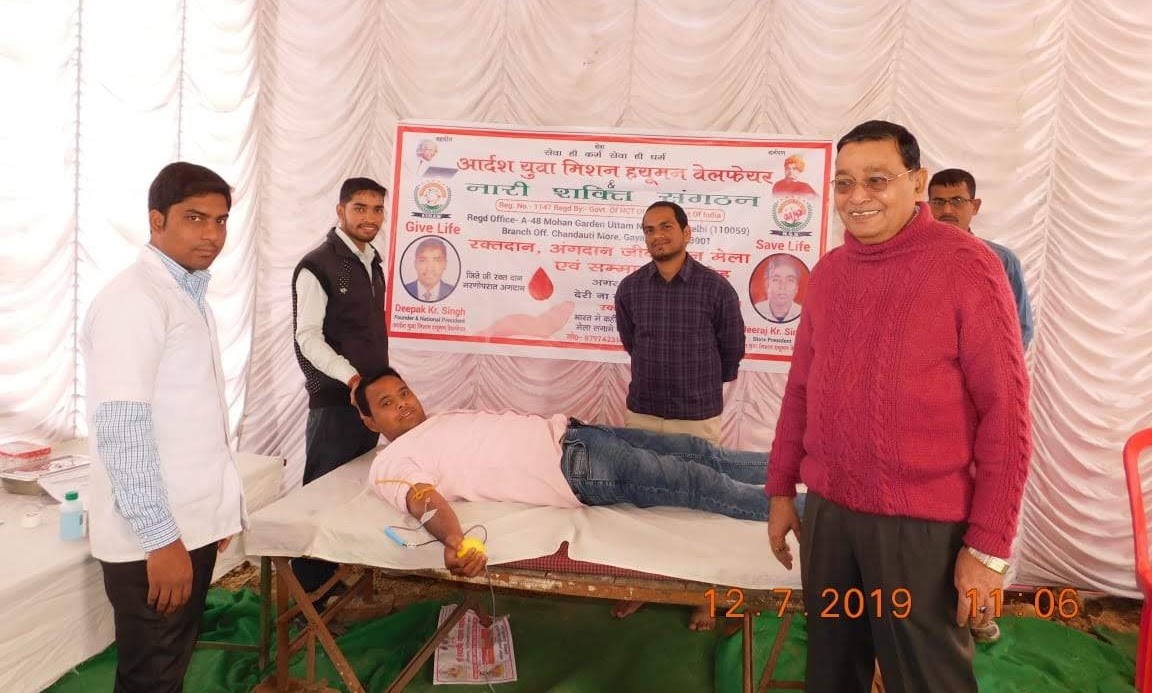
The "Donate For Life" Initiative By Aadarsh Yuva Mission Human Welfare India Undertakes A Variety Of Impactful Activities To Promote Blood And Organ Donation, Ensuring Greater Awareness, Participation, And Support. These Activities Are Designed To Engage Individuals, Communities, And Institutions To Foster A Culture Of Life-Saving Giving.
- Awareness Campaigns:
- Organize Multimedia Campaigns Across Television, Radio, Social Media, And Print Platforms.
- Conduct Community Awareness Programs To Educate People On The Importance And Process Of Donation.
- Create And Distribute Promotional Materials Such As Posters, Flyers, Videos, And Infographics.
- Blood Donation Drives:
- Host Regular Blood Donation Camps In Schools, Colleges, Corporate Offices, And Community Centers.
- Arrange Mobile Blood Donation Units To Reach Rural And Underserved Areas.
- Partner With Healthcare Institutions To Ensure Safe And Efficient Blood Collection.
- Organ Donation Pledge Events:
- Facilitate Pledge Drives Where Individuals Commit To Donating Their Organs After Death.
- Collaborate With Hospitals And Government Agencies To Register Potential Organ Donors.
- Provide Platforms For Family Discussions And Consent Regarding Organ Donation.
- Community Health Camps:
- Organize Free Health Check-Up Camps To Promote Health Awareness And Encourage Blood And Organ Donations.
- Educate Attendees About The Health Benefits And Safety Of Donation.
- Youth Engagement Programs:
- Conduct Donation Awareness Sessions In Schools And Colleges.
- Organize Youth-Driven Campaigns And Competitions To Spread The Message Of Donation.
- Recruit Students As “Donation Ambassadors” To Lead Initiatives In Their Communities.
- Partnerships And Collaborations:
- Work With Ngos, Hospitals, And Blood Banks To Streamline Donation Efforts.
- Partner With Corporate Entities To Host Workplace Donation Drives.
- Engage With Local Influencers And Community Leaders To Amplify Outreach.
- Training And Capacity Building:
- Train Volunteers And Healthcare Professionals On Safe And Ethical Donation Practices.
- Conduct Workshops For Community Leaders And Educators To Promote Donation Culture.
- Success Stories And Testimonials:
- Share Stories Of Lives Saved Through Blood And Organ Donation.
- Highlight The Experiences Of Donors To Inspire Others To Contribute.
- Emergency Support Services:
- Provide A Quick Response System For Urgent Blood Or Organ Donation Needs.
- Maintain A Database Of Active Donors For Emergencies.
- Celebratory Events:
- Host Annual “Life Saver Awards” To Honor Donors And Advocates.
- Organize “World Blood Donor Day” And “Organ Donation Day” Celebrations To Promote The Cause.
- Technology-Driven Initiatives:
- Develop A Mobile App To Connect Donors With Recipients And Hospitals.
- Maintain An Online Registry For Blood And Organ Donors.
- Use Data Analytics To Identify High-Need Areas And Plan Activities Accordingly.
- Advocacy And Policy Engagement:
- Advocate For Supportive Policies And Legal Frameworks To Encourage Donation.
- Work With Government Agencies To Simplify The Donation Registration Process.
- Myth-Busting And Counseling Sessions:
- Address Fears And Misconceptions Related To Blood And Organ Donation.
- Offer Counseling To Families Of Donors To Help Them Understand The Importance Of Their Contribution.
- Educational Webinars And Seminars:
- Host Online And Offline Sessions Featuring Medical Experts And Donation Advocates.
- Provide Detailed Information About Donation Processes, Eligibility, And Benefits.
- Regular Impact Reporting:
- Publish Reports And Updates On The Outcomes Of Donation Drives And Campaigns.
- Share Statistical Data To Highlight The Initiative’s Achievements And Encourage Further Participation.
By Conducting These Activities, "Donate For Life" Ensures A Comprehensive And Impactful Approach To Saving Lives, Building Awareness, And Creating A Sustainable Donation Ecosystem.
Target Beneficiaries Of "Donate For Life"
The "Donate For Life" Initiative By Aadarsh Yuva Mission Human Welfare India Aims To Serve A Wide Spectrum Of Individuals And Groups Who Are Directly Or Indirectly Impacted By Blood And Organ Donation. Below Is A List Of Target Beneficiaries, Along With Examples For Better Understanding:
- Accident Victims
- Example: A Patient Requiring Immediate Blood Transfusion After A Car Crash.
- Surgical Patients
- Example: Individuals Undergoing Major Surgeries Like Heart Bypass Or Organ Transplants.
- Cancer Patients
- Example: Patients Needing Regular Blood Transfusions During Chemotherapy.
- Pregnant Women
- Example: Women Experiencing Complications During Childbirth Requiring Blood Transfusion.
- Children With Blood Disorders
- Example: Children Suffering From Thalassemia Or Sickle Cell Anemia Requiring Frequent Transfusions.
- Organ Failure Patients
- Example: A Person With End-Stage Kidney Failure Awaiting A Transplant.
- Heart And Lung Patients
- Example: Individuals With Severe Heart Or Lung Conditions Needing Organ Transplants.
- Liver And Pancreas Patients
- Example: Patients With Liver Cirrhosis Or Pancreatic Diseases Requiring Transplants.
- Burn Victims
- Example: Patients With Severe Burns Needing Plasma Or Whole Blood.
- Emergency Trauma Cases
- Example: Victims Of Natural Disasters Or Accidents Needing Immediate Medical Care.
- Patients In Rural Areas
- Example: People In Remote Regions With Limited Access To Healthcare Resources.
- Blood Banks And Hospitals
- Example: Healthcare Facilities Benefiting From Increased Blood Supply To Meet Demand.
- Medical Students And Researchers
- Example: Students Learning About Organ Transplantation And Blood Banking Through Live Examples.
- Families Of Donors And Recipients
- Example: Relieved Families Seeing Their Loved Ones Recover Thanks To Donated Blood Or Organs.
- Chronic Disease Patients
- Example: Individuals With Conditions Like Leukemia Requiring Regular Transfusions.
- Dialysis Patients
- Example: People Awaiting Kidney Transplants To Improve Their Quality Of Life.
- Children Waiting For Organ Transplants
- Example: Pediatric Patients Awaiting Liver Or Heart Transplants.
- Hiv And Hemophilia Patients
- Example: Individuals Needing Blood Products To Manage Their Conditions.
- Rare Blood Type Holders
- Example: Patients With Rare Blood Groups Needing Specialized Donor Matching.
- Underprivileged Communities
- Example: People In Economically Disadvantaged Areas Benefiting From Free Blood Donation Drives.
- Healthcare Systems
- Example: Reduced Strain On Hospitals Due To Improved Availability Of Donated Blood And Organs.
- Post-Brain Death Cases
- Example: Families Of Brain-Dead Patients Who Consent To Donate Organs, Benefiting Multiple Recipients.
- Transplant Waiting List Patients
- Example: Individuals On Organ Transplant Waitlists Who Receive Life-Saving Donations.
- Emergency Medical Services (Ems)
- Example: Ambulance Services With Quicker Access To Blood Supplies For Critical Patients.
- Voluntary Blood Donors
- Example: Donors Gaining Health Check-Ups And The Satisfaction Of Contributing To Society.
- Socially Responsible Corporations
- Example: Companies Promoting Blood Donation Among Employees As Part Of Csr Activities.
- Schools And Colleges
- Example: Institutions Benefiting From Awareness Programs And Hosting Donation Camps.
- Senior Citizens With Health Complications
- Example: Older Adults With Anemia Or Organ Failure Benefiting From The Initiative.
- Governments And Policymakers
- Example: Authorities Witnessing Reduced Healthcare Burdens Due To Increased Donations.
- General Public
- Example: Creating A Healthier Society By Addressing Blood And Organ Shortages.
Through Its Inclusive Approach, "Donate For Life" Ensures That Its Benefits Reach Those In Urgent Need, Fostering A More Compassionate And Healthier World.
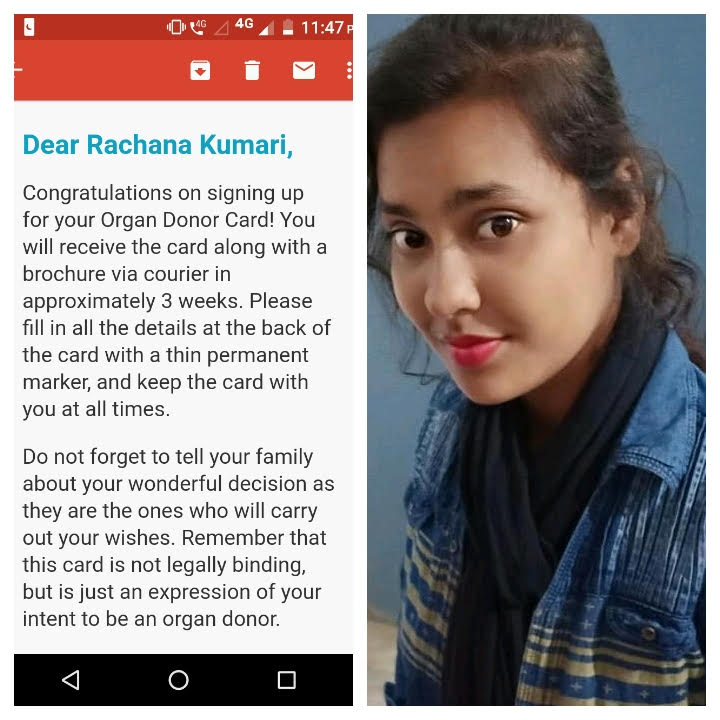 Working Mechanism Of "Donate For Life"
Working Mechanism Of "Donate For Life"
The "Donate For Life" Initiative By Aadarsh Yuva Mission Human Welfare India Operates Through A Structured And Collaborative Approach To Maximize The Impact Of Blood And Organ Donation. Below Is A Pointwise Breakdown Of Its Working Mechanism With Examples:
- Awareness Campaigns
- Example: Organizing Webinars To Educate The Public About The Importance Of Blood And Organ Donation And Debunk Myths.
- Community Outreach Programs
- Example: Conducting Workshops In Rural Areas To Promote Voluntary Blood Donation.
- Registration Of Donors
- Example: Creating An Online Portal Where Individuals Can Register As Blood Or Organ Donors.
- Collaboration With Hospitals And Blood Banks
- Example: Partnering With Local Hospitals To Ensure Smooth Coordination During Donation Drives.
- Organizing Blood Donation Drives
- Example: Setting Up Camps In Colleges, Offices, And Public Spaces For Blood Collection.
- Building A Donor Network
- Example: Establishing A Database Of Regular And On-Call Donors For Emergency Needs.
- Promoting Organ Donation Pledges
- Example: Encouraging Individuals To Sign Organ Donor Cards During Awareness Events.
- Emergency Response System
- Example: Deploying Mobile Units To Collect Blood During Natural Disasters Or Emergencies.
- Use Of Technology For Matching Donors And Recipients
- Example: Using Software To Match Rare Blood Types Or Compatible Organ Donors With Recipients.
- Health Check-Ups For Donors
- Example: Offering Free Health Screenings For Individuals Participating In Donation Drives.
- Advocacy For Policy Change
- Example: Lobbying For Streamlined Organ Donation Procedures At The National Level.
- Youth Engagement Programs
- Example: Launching Campaigns In Schools And Colleges To Involve Students In Donation Drives.
- Involving Corporates
- Example: Partnering With Companies To Organize Employee Blood Donation Camps.
- Hosting Success Story Sessions
- Example: Sharing Testimonials Of Transplant Recipients To Inspire More Donors.
- Creating Educational Materials
- Example: Distributing Pamphlets And Brochures With Facts About The Donation Process.
- Establishing Regional Donation Centers
- Example: Setting Up Centers In Key Locations For Easier Access To Donation Facilities.
- Monitoring And Feedback
- Example: Collecting Feedback From Donors And Beneficiaries To Improve Operations.
- Ensuring Medical Safety Standards
- Example: Following Strict Sterilization And Procedural Protocols During Blood Collection.
- Maintaining Transparency In Allocation
- Example: Providing Updates To Donors On How Their Contributions Are Utilized.
- Promoting Family Discussions
- Example: Encouraging Families To Talk About Organ Donation Preferences Together.
- Training Volunteers
- Example: Equipping Volunteers With Skills To Manage Donation Camps And Interact With Donors.
- Providing Post-Donation Support
- Example: Offering Counseling And Follow-Ups For Organ Donor Families.
- Focusing On Rare Blood Groups
- Example: Identifying And Maintaining A List Of Donors With Rare Blood Types.
- Celebrating Donors
- Example: Organizing Events To Honor Regular Donors And Inspire New Participants.
- Collaborating With Media
- Example: Partnering With Local News Outlets To Broadcast The Importance Of Donations.
Through These Steps, "Donate For Life" Ensures An Efficient, Transparent, And Impactful Process That Saves Lives And Fosters A Culture Of Giving.
Tools And Resources Of "Donate For Life"
The "Donate For Life" Initiative By Aadarsh Yuva Mission Human Welfare India Leverages A Wide Range Of Tools And Resources To Streamline Its Efforts In Promoting Blood And Organ Donation. These Tools Ensure Efficient Operations, Wider Outreach, And A Seamless Donor Experience. Key Resources Include Technology-Driven Platforms Such As Mobile Apps And Web Portals For Donor Registration, Tracking, And Matching Recipients With Suitable Donors. These Platforms Also Serve As Repositories Of Information, Providing Educational Materials About The Donation Process And Its Life-Saving Potential.
Medical Resources Like Mobile Blood Collection Units, Sterilized Equipment, And Collaboration With Certified Hospitals And Blood Banks Ensure The Safety And Quality Of The Donation Process. Regular Health Check-Up Facilities For Donors And Recipients Reinforce Trust And Commitment To Medical Standards.
The Initiative Also Invests In Human Resources, Including Trained Volunteers, Healthcare Professionals, And Counselors, Who Play An Essential Role In Donor Recruitment, Event Organization, And Post-Donation Support. Awareness Tools Such As Social Media Campaigns, Printed Brochures, And Video Testimonials Further Amplify The Message, While Partnerships With Schools, Colleges, Corporates, And Ngos Provide Access To Critical Infrastructure And Logistical Support.
Together, These Tools And Resources Enable "Donate For Life" To Bridge The Gap Between Donors And Recipients, Fostering A Culture Of Altruism And Creating A Robust, Sustainable Network For Saving Lives.
Potential Challenges Of "Donate For Life"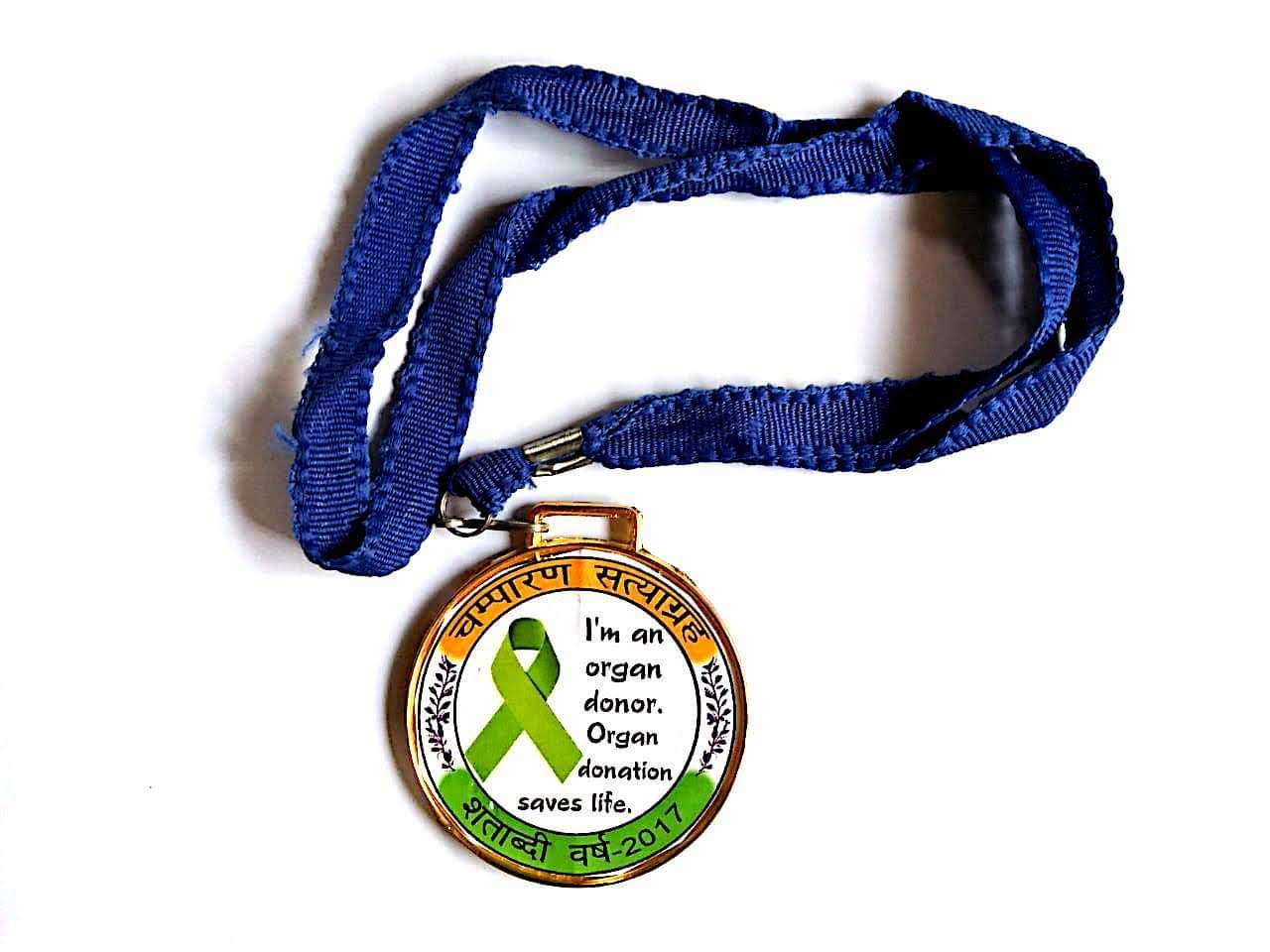
- Lack Of Awareness: Many People Are Unaware Of The Importance Of Blood And Organ Donation.
- Cultural And Religious Beliefs: Misconceptions And Taboos Hinder Participation.
- Fear Of Donation: Concerns About Pain, Side Effects, Or Health Risks Deter Donors.
- Misinformation: Myths About Organ Donation, Like Body Mutilation, Discourage Pledges.
- Shortage Of Donors: Insufficient Numbers Of Regular Donors Lead To Supply-Demand Gaps.
- Emergency Availability: Finding Matching Donors In Emergencies Remains A Challenge.
- Logistical Issues: Limited Facilities For Blood Storage And Organ Transplantation.
- Urban-Rural Divide: Rural Areas Lack Access To Donation Drives And Medical Infrastructure.
- Inconsistent Donor Retention: Difficulty In Encouraging Repeat Donations.
- Legal And Policy Barriers: Complex Procedures For Organ Donation Deter Potential Donors.
- Ethical Concerns: Issues Surrounding The Commercialization Of Organ Donation.
- Donor Registration: Low Registration Rates For Organ Donors.
- Family Consent: Families Often Oppose Organ Donation Due To Emotional Reasons.
- Medical Standards: Ensuring Safety And Quality During Blood Collection And Organ Recovery.
- Resource Limitations: Insufficient Funding For Awareness And Operational Activities.
- Lack Of Trained Staff: Shortage Of Medical And Technical Personnel For Managing Drives.
- Cold Chain Management: Maintaining Proper Storage Conditions For Collected Blood.
- Communication Gaps: Ineffective Messaging Fails To Motivate Donors.
- Technological Challenges: Limited Access To Advanced Donor-Recipient Matching Tools.
- Stigma Around Donation: Fear Of Societal Judgment For Donating Organs.
- Donor Burnout: Regular Donors May Feel Overburdened Or Undervalued.
- Volunteer Engagement: Difficulty In Recruiting And Retaining Dedicated Volunteers.
- Coordination Among Stakeholders: Poor Collaboration Between Ngos, Hospitals, And Blood Banks.
- Pandemic-Related Challenges: Covid-19 And Similar Outbreaks Hinder In-Person Drives.
- Transportation Issues: Delays In Delivering Organs Within Their Viability Period.
- Low Youth Participation: Lack Of Targeted Campaigns To Engage Younger Demographics.
- Complicated Consent Processes: Bureaucratic Hurdles In Organ Donation Approvals.
- Psychological Barriers: Anxiety And Fear Associated With Medical Procedures.
- Language Barriers: Difficulty In Conveying Messages To Diverse Linguistic Groups.
- Seasonal Fluctuations: Donor Availability Decreases During Festivals And Holidays.
- Media Sensationalism: Negative Stories About Organ Donation Processes Create Distrust.
- High Costs Of Transplantation: Financial Barriers For Recipients Limit Transplant Success.
- Corruption Risks: Black Market Organ Trade Undermines Trust In Donation Systems.
- Limited Access To Rural Communities: Lack Of Campaigns In Remote Areas.
- Donor Fatigue Post-Drive: Physical Exhaustion After Donation May Deter Repeat Participation.
- Competition Among Ngos: Overlapping Campaigns Dilute Impact.
- Negative Feedback: One Bad Experience Can Deter Multiple Potential Donors.
- Socioeconomic Barriers: Poverty Limits Participation In Urban And Rural Areas Alike.
- Short Shelf-Life Of Blood: Frequent Drives Are Required To Maintain Supply.
- Low Female Participation: Myths And Health Concerns Discourage Women From Donating.
- Ethical Dilemmas In Organ Matching: Difficult Decisions Regarding Recipient Prioritization.
- Geographical Challenges: Transporting Organs Across Long Distances Efficiently.
- Privacy Concerns: Donors May Fear Data Misuse From Registration Databases.
- Policy Gaps In Organ Allocation: Lack Of Transparency In Organ Allocation Processes.
- Mismanagement Of Resources: Inefficient Use Of Funds And Facilities Reduces Impact.
- Health Risks For Donors: Rare But Potential Risks Like Infections Or Reactions Post-Donation.
- Lack Of Inspirational Stories: Absence Of Compelling Narratives To Motivate Donors.
- Skepticism About Ngos: Public Mistrust In Donation Programs And Fund Allocation.
- Dependence On External Support: Reliance On Partnerships For Funding And Resources.
- Sustainability Of Programs: Ensuring Long-Term Impact And Donor Engagement.
Addressing These Challenges Through Targeted Strategies And Robust Management Is Essential For The Success Of "Donate For Life."
Government Of India Initiatives For "Donate For Life"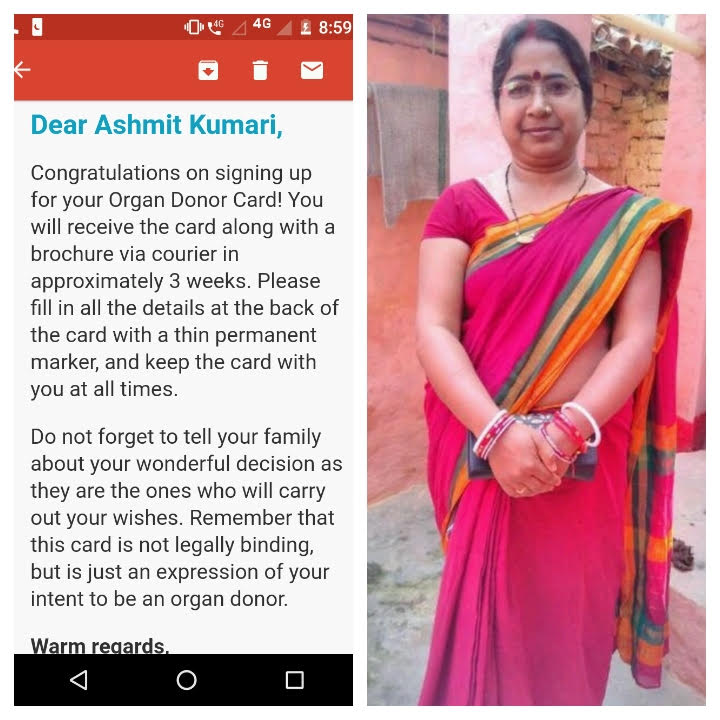
The Government Of India Has Implemented Several Programs And Policies To Promote Blood And Organ Donation, Aiming To Bridge The Gap Between Demand And Supply While Fostering A Culture Of Altruistic Giving. These Initiatives Align With The Objectives Of "Donate For Life" And Provide A Robust Framework For Enhancing The Impact Of Donation Efforts.
1. National Organ And Tissue Transplant Organization (Notto):
- A Central Hub For Coordinating Organ And Tissue Donation Across India.
- Maintains A National Registry For Organ Donation And Transplantation.
- Provides Guidelines, Training, And Resources For Hospitals And Medical Staff Involved In Transplants.
2. National Blood Transfusion Council (Nbtc):
- Established To Promote Voluntary And Non-Remunerated Blood Donation.
- Oversees The Functioning Of Blood Banks And Ensures Compliance With Safety Standards.
- Conducts Awareness Campaigns To Encourage Regular Blood Donation.
3. Jeevan Jyoti Initiative:
- Aimed At Raising Awareness About Organ Donation.
- Promotes The Concept Of Brain Death Certification And Its Linkage To Organ Donation.
- Encourages Public And Private Hospitals To Participate In The Organ Donation Ecosystem.
4. Organ Donation Day:
- Observed Annually To Spread Awareness About The Importance Of Organ Donation.
- Features Seminars, Workshops, And Public Discussions Across The Country.
5. Ayushman Bharat - Health And Wellness Centers (Hwcs):
- Provides Platforms For Spreading Awareness About Blood And Organ Donation.
- Facilitates Donor Registration And Basic Health Check-Ups For Potential Donors.
6. Mohan Foundation Partnership:
- Collaborates With Ngos And Private Entities To Streamline The Organ Donation Process.
- Offers Training Programs For Transplant Coordinators And Medical Professionals.
7. Online Pledging Platforms:
- Government-Supported Portals Like Notto Allow Individuals To Pledge Their Organs Online.
- Simplifies The Process Of Registering As An Organ Donor.
8. Amendments To The Transplantation Of Human Organs Act, 1994:
- Includes Provisions To Regulate Organ Donation And Transplantation Practices.
- Simplifies Procedures For Organ Donation By Living And Deceased Donors.
9. National Health Mission (Nhm):
- Supports Initiatives Related To Maternal And Child Health, Often Reliant On Blood Donation.
- Encourages Rural Participation Through Awareness Campaigns And Mobile Blood Collection Units.
10. Public-Private Partnerships (Ppps):
- Encourages Collaboration With Private Hospitals And Ngos For Donation Drives.
- Provides Financial And Logistical Support For Campaigns And Donor Management.
11. Youth Awareness Programs:
- Targets Young Individuals Through Programs In Schools And Colleges.
- Conducts Blood Donation Camps And Organ Donation Pledge Drives In Educational Institutions.
12. Awareness Campaigns On Social Media:
- Leveraging Platforms Like Mygov, Twitter, And Facebook To Share Success Stories.
- Engages Citizens With Quizzes, Webinars, And Interactive Content On Donation.
13. National Cadaver Transplant Program:
- Aimed At Increasing Cadaver Donations For Organ Transplants.
- Facilitates Transportation Of Organs Through Green Corridors.
14. Financial Support For Organ Transplants:
- Subsidies For Patients In Need Of Organ Transplants Under Ayushman Bharat.
- Special Provisions For Economically Weaker Sections To Access Transplant Facilities.
15. Training And Capacity Building:
- Training Programs For Healthcare Providers To Improve Efficiency In Handling Donations.
- Workshops For Legal And Ethical Aspects Of Organ Donation And Transplantation.
These Initiatives Reflect The Government’s Commitment To Fostering A Donation-Friendly Environment In India, Making Them Valuable Complements To The Objectives Of "Donate For Life." By Collaborating With These Programs, The Initiative Can Amplify Its Outreach And Ensure A Sustainable Impact.
Impact Projection Of "Donate For Life"
The "Donate For Life" Initiative By Aadarsh Yuva Mission Human Welfare India Is Poised To Create A Significant And Lasting Impact On Both Individual Lives And Society At Large. By Fostering A Culture Of Blood And Organ Donation, The Initiative Aims To Bridge The Gap Between The Rising Demand And The Insufficient Supply Of These Life-Saving Resources.
Through Awareness Campaigns, Educational Programs, And Collaborative Efforts With Hospitals, Ngos, And Government Agencies, "Donate For Life" Seeks To Increase The Number Of Voluntary Donors Across The Country. The Projected Impact Includes Saving Thousands Of Lives Annually, Providing Timely Medical Interventions, And Reducing Wait Times For Organ Transplants. Blood Donation Drives Will Help Alleviate The Chronic Shortages Faced By Hospitals, While Increased Organ Donations Will Give Hope To Those In Need Of Critical Transplants.
The Initiative Is Expected To Significantly Improve Public Health Outcomes, Particularly In Underserved Rural Areas, Where Access To Blood And Organ Donation Resources Is Limited. Furthermore, By Engaging The Youth, It Aims To Build A Sustainable Donor Base For The Future. As More Individuals Register To Donate Blood And Organs, The Initiative Will Foster A Compassionate Society That Values The Act Of Giving And Ensures That No One Is Left Behind Due To Lack Of Medical Resources.
In The Long Term, "Donate For Life" Has The Potential To Contribute To A More Resilient Healthcare System In India, Reducing The Strain On Emergency Services, And Ensuring That Life-Saving Treatments Are Accessible To All, Regardless Of Economic Background. By Creating Awareness And Encouraging Participation, The Initiative Will Help Create A Society Where Saving Lives Becomes A Collective Responsibility.
Future Goals Of "Donate For Life"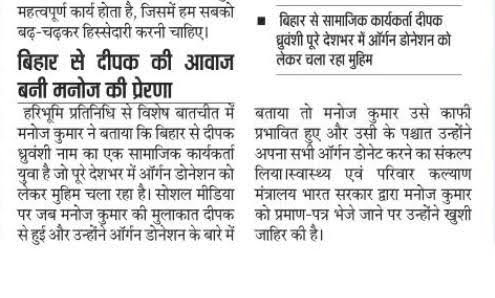
The "Donate For Life" Initiative By Aadarsh Yuva Mission Human Welfare India Has Set Ambitious Goals For The Future To Expand Its Impact And Create A Lasting Change In The Fields Of Blood And Organ Donation. These Goals Are Centered Around Enhancing Awareness, Increasing Participation, And Establishing A Sustainable And Effective Donation System That Can Save Lives Across The Nation. Some Of The Key Future Goals Include:
- Increase The Number Of Donors: Expand The Donor Base By Organizing More Blood And Organ Donation Drives, Ensuring Greater Participation From Urban And Rural Communities Alike.
- Strengthen Awareness Campaigns: Utilize Digital Platforms, Social Media, And Community Outreach Programs To Increase Awareness About The Importance Of Both Blood And Organ Donation.
- Collaboration With Government And Ngos: Forge Stronger Partnerships With Government Bodies, Healthcare Institutions, And Non-Governmental Organizations To Enhance The Scale And Reach Of Donation Drives.
- Youth Engagement And Advocacy: Focus On Engaging The Younger Generation By Implementing Donation Education Programs In Schools, Colleges, And Youth Organizations, Encouraging Them To Take An Active Role In Donation Efforts.
- Expansion Of Organ Donation Programs: Work Towards Increasing Cadaver Organ Donations And Advocate For The Registration Of Potential Organ Donors, Particularly In Cases Of Brain Death.
- Improved Donation Infrastructure: Collaborate With Hospitals And Blood Banks To Improve The Infrastructure For Collecting, Processing, And Storing Blood And Organs, Ensuring Higher Efficiency And Safety Standards.
- Setting Up National Donation Centers: Establish Donation Centers In Underserved Areas To Ensure Easier Access For Individuals Willing To Donate Blood And Register For Organ Donation.
- Promote Live Organ Donation:Educate The Public About The Safety And Benefits Of Live Organ Donation And Address Concerns To Encourage People To Donate Kidneys And Other Organs.
- Develop A Comprehensive Donor Database: Create A Centralized, Secure, And Easily Accessible Donor Database That Allows Hospitals And Healthcare Providers To Quickly Find Suitable Donors For Recipients In Need.
- Collaboration With Corporate Sector:Work With Corporate Organizations To Create Donor Programs Within Companies, Allowing Employees To Donate Blood Or Register For Organ Donation Through Workplace Initiatives.
- Strengthen Blood Donation Drives: Organize Regular And Large-Scale Blood Donation Camps Across India, Ensuring A Steady And Safe Supply Of Blood For Hospitals, Especially During Emergencies.
- Focus On Rural And Remote Areas:Expand Outreach Programs In Rural And Remote Areas Where Awareness And Access To Donation Opportunities Are Limited, Helping Bridge The Urban-Rural Divide.
- Policy Advocacy:Advocate For Supportive Policies That Make Blood And Organ Donation Processes Smoother, Such As Tax Incentives For Donors Or Government-Funded Organ Transplant Schemes For Economically Disadvantaged Individuals.
- Enhance Donor Safety And Trust:Ensure That All Blood And Organ Donation Processes Adhere To High Medical And Ethical Standards, Building Trust Among Donors And Recipients.
- Promote Organ Donation Posthumously:Educate Families About The Importance Of Posthumous Organ Donation And Encourage Open Discussions About This Life-Saving Decision.
- Sustainability Of The Initiative:Secure Funding And Resources To Maintain And Grow The Initiative, Ensuring That It Remains A Vital And Sustainable Part Of India’s Healthcare And Humanitarian Landscape.
- Tracking And Reporting Impact:Develop A System For Tracking The Outcomes Of Donations, Such As The Number Of Lives Saved And The Success Rate Of Transplants, To Continually Improve The Initiative’s Effectiveness.
By Achieving These Goals, "Donate For Life" Aspires To Significantly Reduce The Number Of Preventable Deaths Caused By A Lack Of Blood Or Organ Availability, Creating A Healthier, More Compassionate Society Where Everyone Can Contribute To Saving Lives.
Case Studies And Success Stories Of "Donate For Life" Initiatives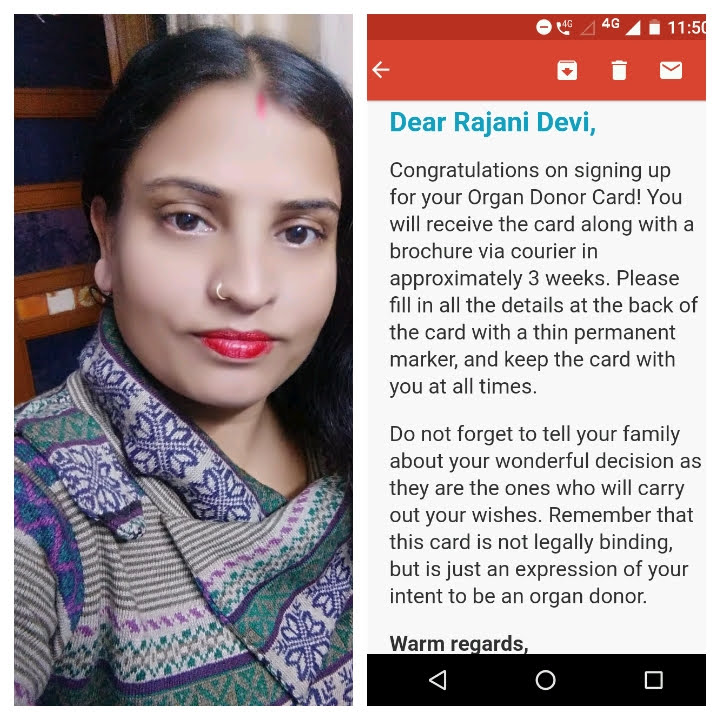
Some Brief Case Studies And Success Stories Highlighting The Impact Of The "Donate For Life" Initiative By Aadarsh Yuva Mission Human Welfare India:
- Blood Donation Drive In Mumbai:A Large-Scale Blood Donation Drive Organized In Mumbai Saw Over 1,000 Volunteers Participating, Resulting In A Significant Boost To The Local Blood Bank's Reserves. The Event Not Only Provided Blood For Immediate Medical Emergencies But Also Encouraged Regular Blood Donation Among Young People, Setting A Precedent For Future Drives.
- Collaboration With Delhi’s Aiims For Organ Donation Awareness:A Series Of Awareness Workshops Held In Collaboration With Aiims, Delhi, Successfully Educated Over 500 Attendees About Organ Donation. As A Result, The Hospital Saw A Surge In Individuals Registering As Organ Donors, Particularly For Cadaver Donations.
- Youth Engagement In Pune: A School Blood Donation Camp:A School-Led Blood Donation Camp In Pune, Organized By A Group Of High School Students As Part Of The "Donate For Life" Initiative, Collected Over 200 Units Of Blood. This Event Highlighted The Active Involvement Of Young People In Promoting The Cause And Fostering A Culture Of Giving.
- Organ Donation In Rural Uttar Pradesh:In Rural Uttar Pradesh, The Initiative Conducted A Series Of Mobile Health Camps To Educate Villagers About The Importance Of Organ Donation. This Led To A First-Ever Successful Kidney Transplant In The Area, Made Possible By A Local Donor Who Volunteered After Attending The Camp.
- Success Story Of A Liver Transplant In Chennai:A 35-Year-Old Woman In Chennai Suffering From Liver Failure Was Saved Thanks To A Successful Liver Transplant Facilitated By The "Donate For Life" Initiative. After An Awareness Program In Her Community, Her Family Registered As Organ Donors, And She Received A Liver From A Deceased Donor.
- Corporate Partnership With Tcs: Employee Donation Program:A Partnership With Tata Consultancy Services (Tcs) Led To The Successful Registration Of Over 500 Employees For Blood And Organ Donation. The Company Also Organized Blood Donation Drives In Its Offices, Encouraging Employees To Contribute Regularly.
- Organ Donation Awareness Campaign In Kerala:An Extensive Campaign Across Kerala’s Colleges And Universities Resulted In Over 1,000 Students Registering As Organ Donors. The Campaign Utilized Social Media, Seminars, And Success Stories To Inspire Young People To Make Life-Saving Decisions.
- Blood Donation Camp In Varanasi During Festivals:During The Festivals Of Diwali And Holi, The "Donate For Life" Initiative Organized Blood Donation Camps In Varanasi. These Camps Saw A Surge In Donations Due To The Festive Spirit And The Increased Awareness Generated By The Initiative, Helping Blood Banks Meet Urgent Demands.
- Transplant Success For Child With Heart Disease In Kolkata:A Child In Kolkata Suffering From A Congenital Heart Disease Was Saved Through A Heart Transplant Made Possible By The Initiative's Awareness Campaign. The Donor, A Brain-Dead Individual, Had Registered Their Organ Donation, Leading To A Life-Saving Surgery For The Child.
- Expansion In Remote Areas: Rajasthan Blood Donation Drive:A Blood Donation Drive Held In A Remote Village In Rajasthan, Where Blood Banks Were Typically Understocked, Collected Over 100 Units Of Blood. This Success Was Attributed To The Efforts Of Local Volunteers Who Actively Promoted The Event And Educated The Villagers About The Importance Of Regular Donations.
These Case Studies And Success Stories Demonstrate The Powerful Impact Of The "Donate For Life" Initiative, Showing How Blood And Organ Donations Can Save Lives, Bring Communities Together, And Inspire Individuals To Contribute To The Welfare Of Others. Through These Efforts, The Initiative Continues To Foster A Culture Of Compassion And Generosity Across India.
Impact Metrics Of "Donate For Life"
The "Donate For Life" Initiative By Aadarsh Yuva Mission Human Welfare India Aims To Achieve Significant Positive Change In The Areas Of Blood And Organ Donation. To Measure The Success And Effectiveness Of The Initiative, Several Key Impact Metrics Are Tracked:
- Number Of Blood Donations Collected
- Total Units Of Blood Donated During Each Blood Donation Drive.
- Percentage Increase In The Frequency Of Blood Donations Compared To Previous Years.
- Organ Donation Registrations
- Number Of Individuals Who Have Registered As Organ Donors.
- Increase In The Number Of Family Discussions About Organ Donation, Leading To More Posthumous Organ Donations.
- Lives Saved Through Blood And Organ Donations
- The Number Of Lives Saved Through The Successful Receipt Of Blood Or Organ Transplants Facilitated By The Initiative.
- Success Stories Of Recipients Who Have Received Life-Saving Transplants Due To Increased Awareness And Donations.
- Geographic Reach Of Donation Drives
- Expansion Of Donation Drives To Rural And Remote Areas.
- Number Of New Regions Covered By The Initiative's Awareness Programs.
- Youth Engagement In Donation Drives
- Number Of Youth Volunteers Participating In Blood And Organ Donation Drives.
- Growth In Youth-Led Initiatives, Especially In Schools And Colleges.
- Increased Awareness And Education
- Number Of Educational Campaigns (Workshops, Seminars, Webinars) Conducted.
- Reach Of Social Media Campaigns (E.G., Views, Shares, And Engagement On Awareness Posts About Blood And Organ Donation).
- Partnerships With Hospitals And Ngos
- Number Of Hospitals And Ngos Collaborating With The Initiative For Donation Drives.
- Success Rate Of Hospital Collaborations In Ensuring The Proper Processing And Use Of Donated Blood And Organs.
- Public Registration For Blood And Organ Donation
- Increase In Public Registrations At Donation Camps And Online Platforms For Blood And Organ Donation.
- Rate Of Retention Of Donors For Regular, Recurring Donations.
- Sustainability And Continuity Of Donation Programs
- Number Of Donation Programs Organized Annually (Blood, Organ, Health Camps).
- Availability Of Long-Term Donor Retention Programs To Ensure A Steady Supply Of Blood And Organs.
- Government And Policy Advocacy Outcomes
- Successful Lobbying For Government Policies That Promote Organ Donation (E.G., Tax Benefits For Organ Donors, Easier Registration Processes).
- Collaboration With Local And National Authorities To Improve Donation Infrastructure And Donor Safety.
- Corporate Involvement
- Number Of Corporate Partnerships That Have Facilitated Employee Blood And Organ Donation Drives.
- Contribution Of Companies To The Initiative Through Corporate Social Responsibility (Csr) Programs.
- Feedback And Satisfaction Of Donors And Recipients
- Surveys And Feedback Collected From Blood And Organ Donors To Gauge Their Satisfaction And Encourage Continued Participation.
- Success Stories From Organ Recipients Regarding The Positive Impact Of Donations On Their Lives.
- Impact On Local Blood Bank Reserves
- The Increase In Blood Bank Stocks In Regions Where Donation Drives Have Been Conducted.
- Number Of Blood Banks That Report Higher Sustainability Due To The Initiative’s Efforts.
- Organ Donation Success Rate
- Success Rate Of Organ Transplants Facilitated By The Initiative, Including Improvements In Transplant Outcomes Due To Better Donor Matching And Timing.
- Post-Transplant Health Outcomes Of Recipients (Survival Rates, Quality Of Life Improvements).
- Community Health Impact
- Data Showing Reductions In Preventable Deaths Due To Organ And Blood Shortages.
- Positive Health Outcomes In Communities As A Result Of Regular Access To Necessary Blood Supplies And Organ Transplants.
These Impact Metrics Help Evaluate The Effectiveness Of The "Donate For Life" Initiative, Track Its Progress, And Identify Areas For Improvement. By Closely Monitoring These Metrics, The Initiative Can Continue To Grow And Provide Even Greater Benefits To The Communities It Serves.
Conclusion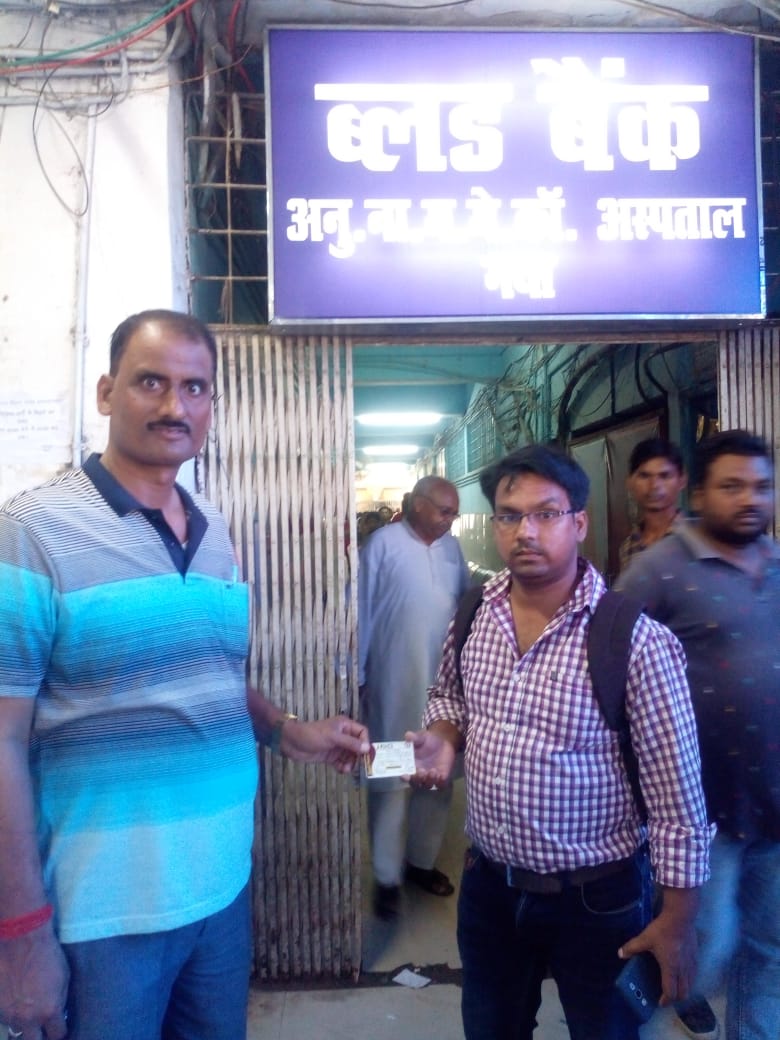
The "Donate For Life" Initiative By Aadarsh Yuva Mission Human Welfare India Is A Powerful And Transformative Movement Aimed At Saving Lives Through The Promotion Of Blood And Organ Donation. Guided By The Impactful Tagline, "The Power To Save Lives Is In Your Hand," The Initiative Has Made Significant Strides In Bridging The Gap Between The Critical Need For Donations And The Insufficient Supply Of Blood And Organs. Through Its Multifaceted Approach Of Awareness Campaigns, Educational Programs, Youth Engagement, And Collaboration With Hospitals And Ngos, It Has Successfully Fostered A Culture Of Giving, Compassion, And Community Responsibility.
The Initiative’s Ability To Inspire Individuals, Families, And Organizations To Actively Participate In Blood And Organ Donation Has Resulted In Numerous Lives Saved And Medical Conditions Treated. The Collective Efforts Of Volunteers, Donors, And Healthcare Professionals Have Contributed To A Healthier And More Compassionate Society. From Organizing Blood Donation Camps To Increasing Organ Donor Registrations, "Donate For Life" Has Proven That Even The Smallest Act Of Donation Can Lead To Monumental Changes In The Lives Of Those In Need.
As It Continues To Grow And Expand, The Initiative Remains Committed To Educating Communities, Strengthening Partnerships, And Advocating For Policies That Further Support The Donation System. The Mission To Create A Sustainable And Accessible Blood And Organ Donation Ecosystem Is More Important Than Ever. With Continued Collective Action, The "Donate For Life" Initiative Aims To Create A Future Where No One Has To Wait For Life-Saving Treatment, And Where The Power Of Giving Saves Lives Every Day.
Ultimately, The Success Of "Donate For Life" Lies In Its Ability To Empower Individuals With The Knowledge, Resources, And Platforms To Become Life-Saving Donors. It Is A Call To Action For All To Recognize That The Power To Make A Difference Is In Each One Of Us.
